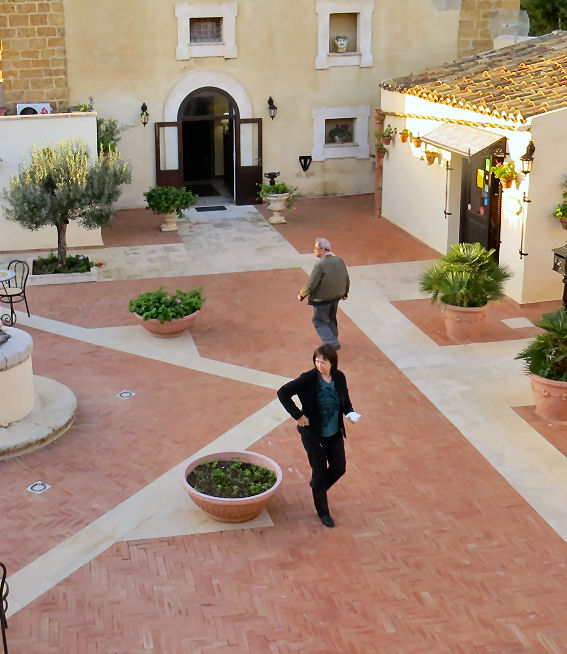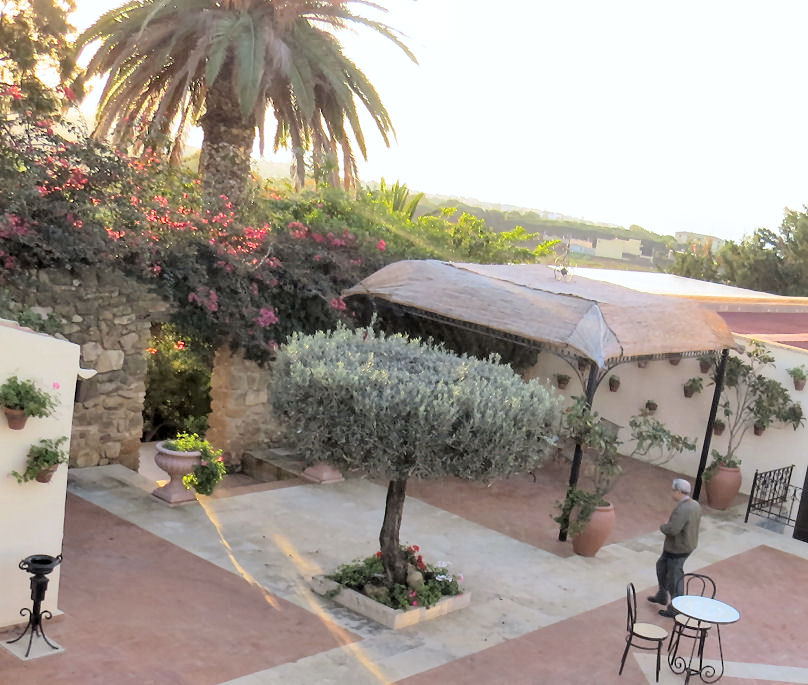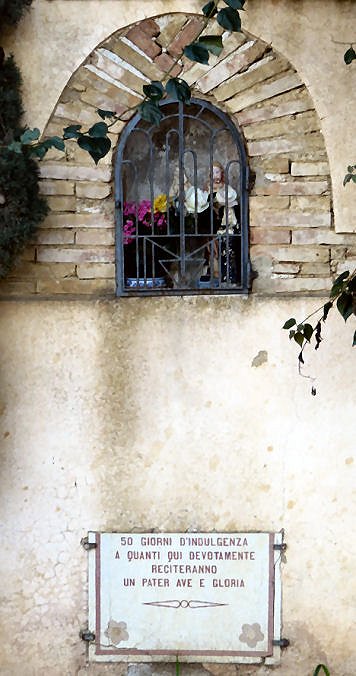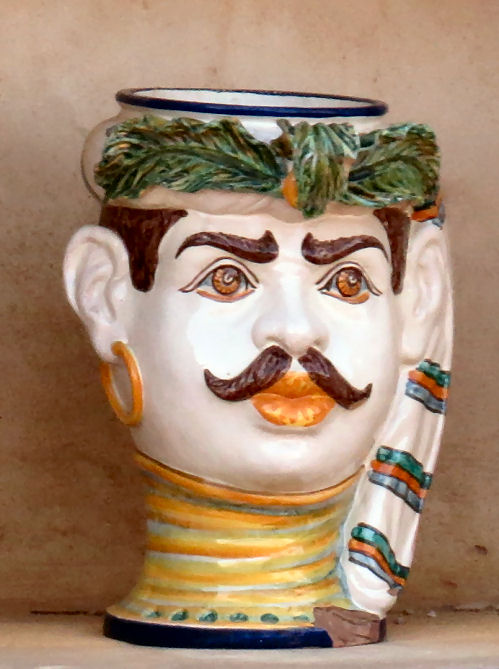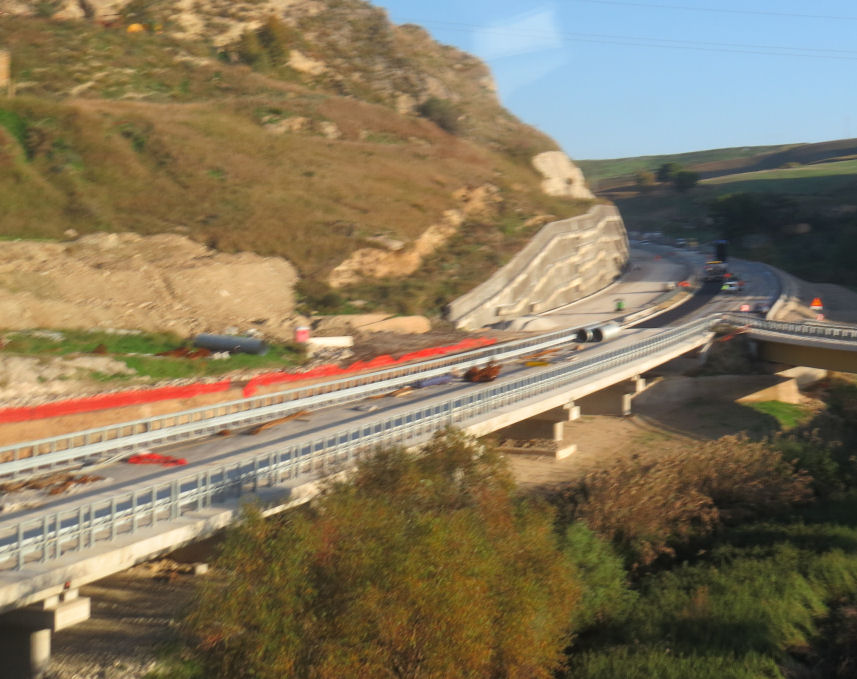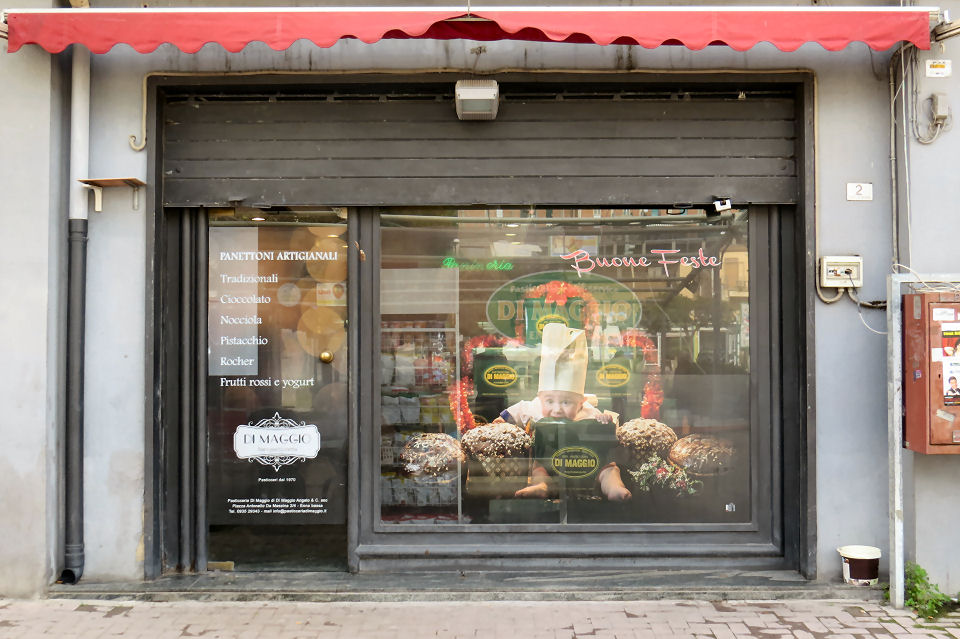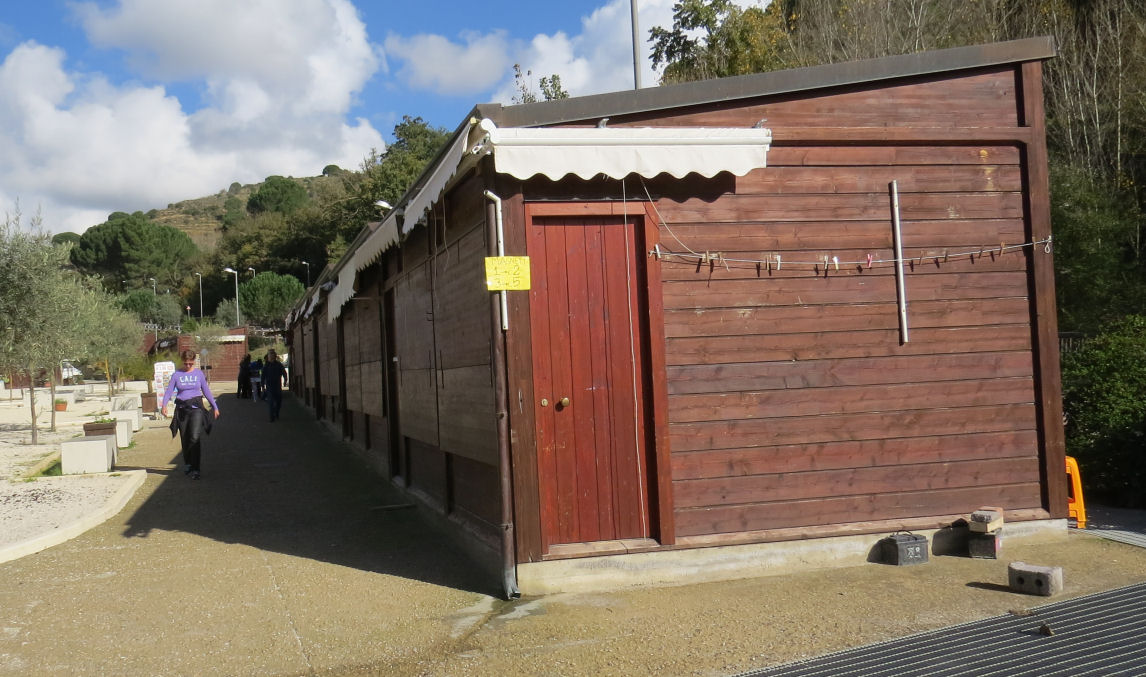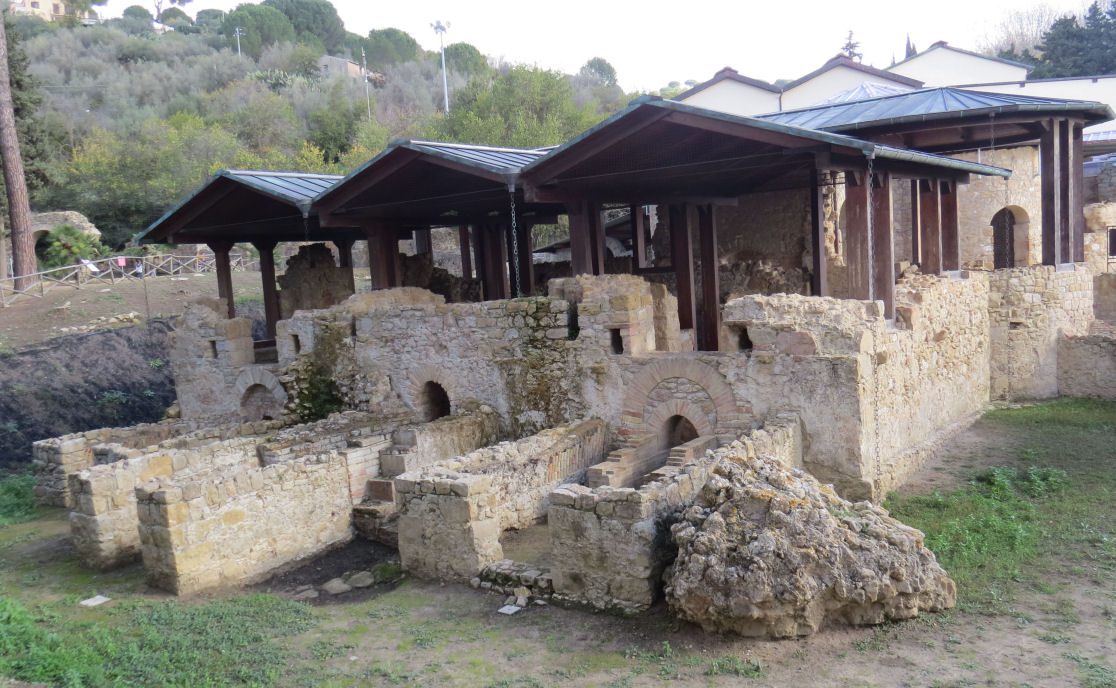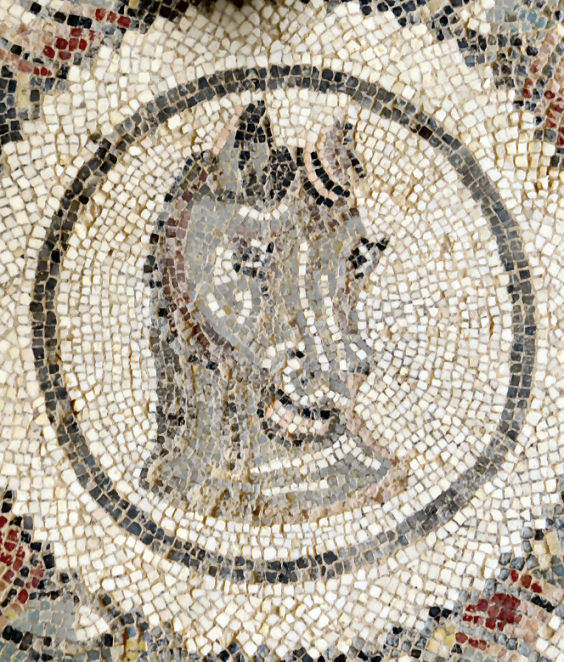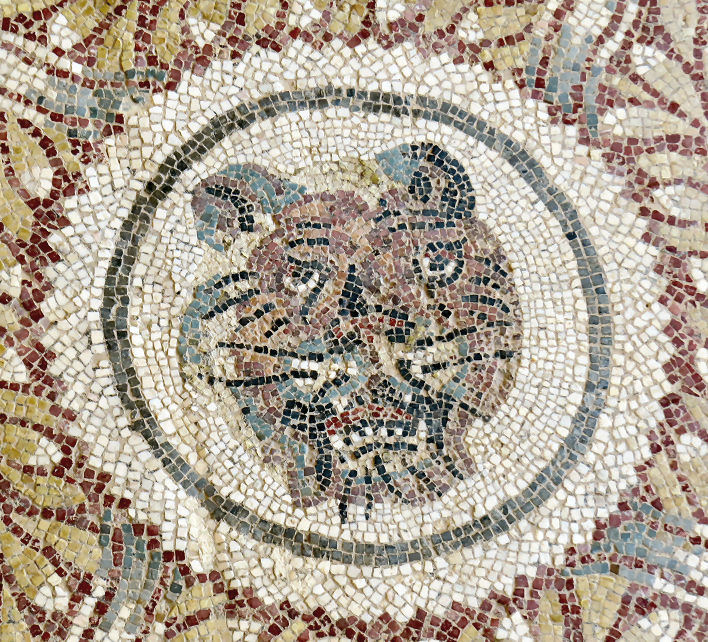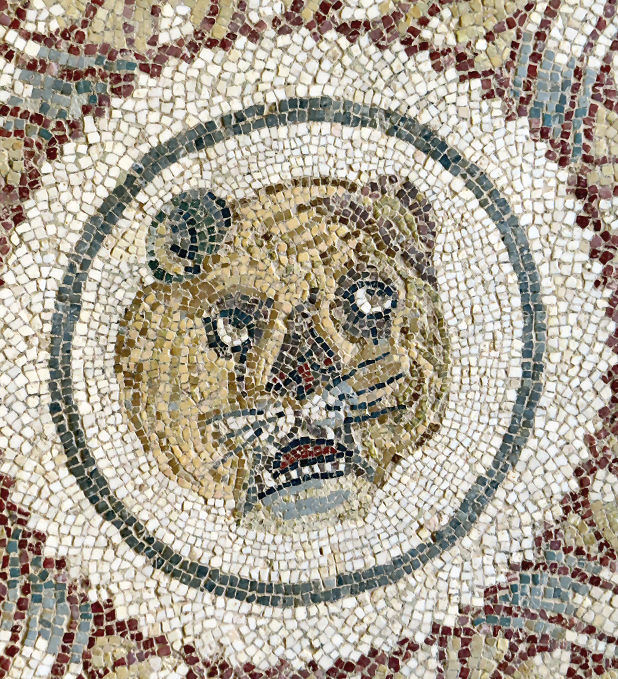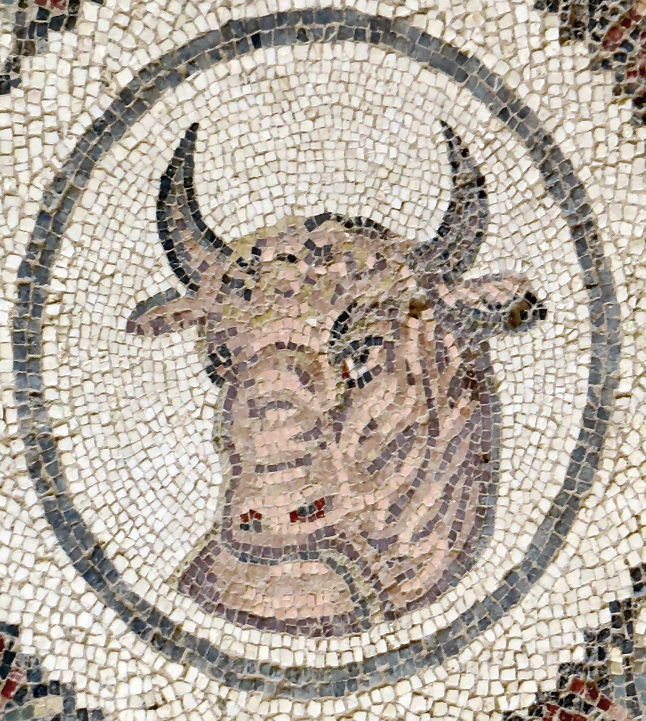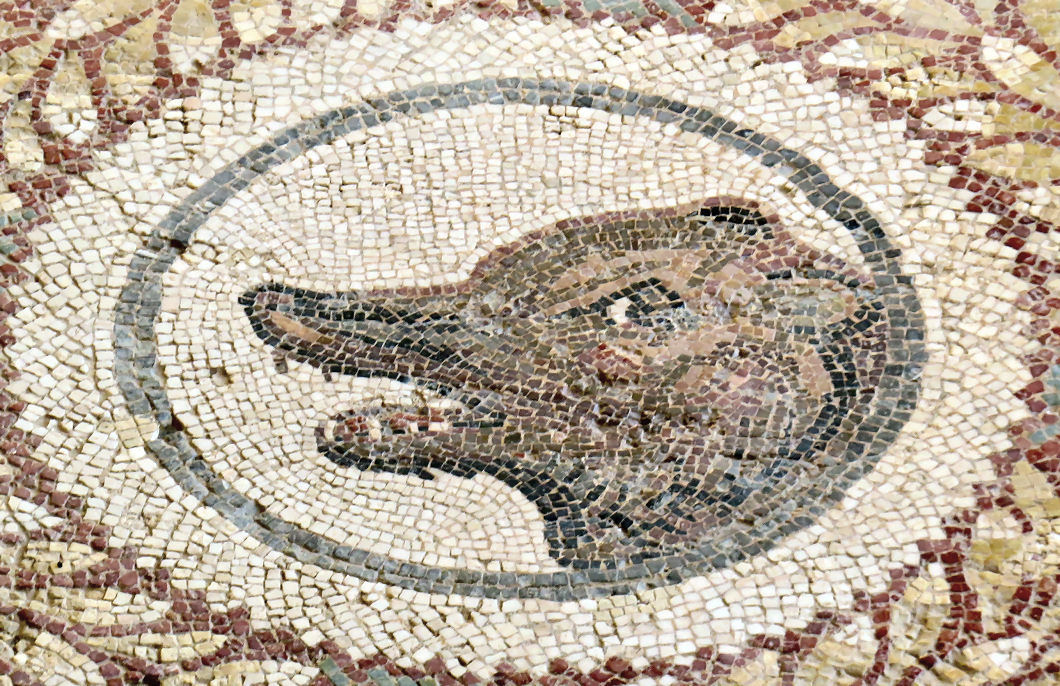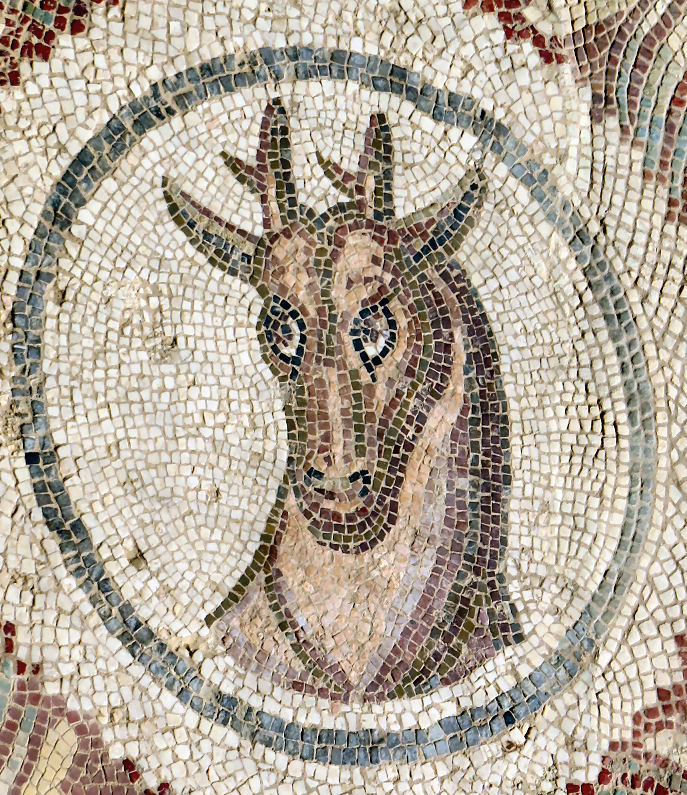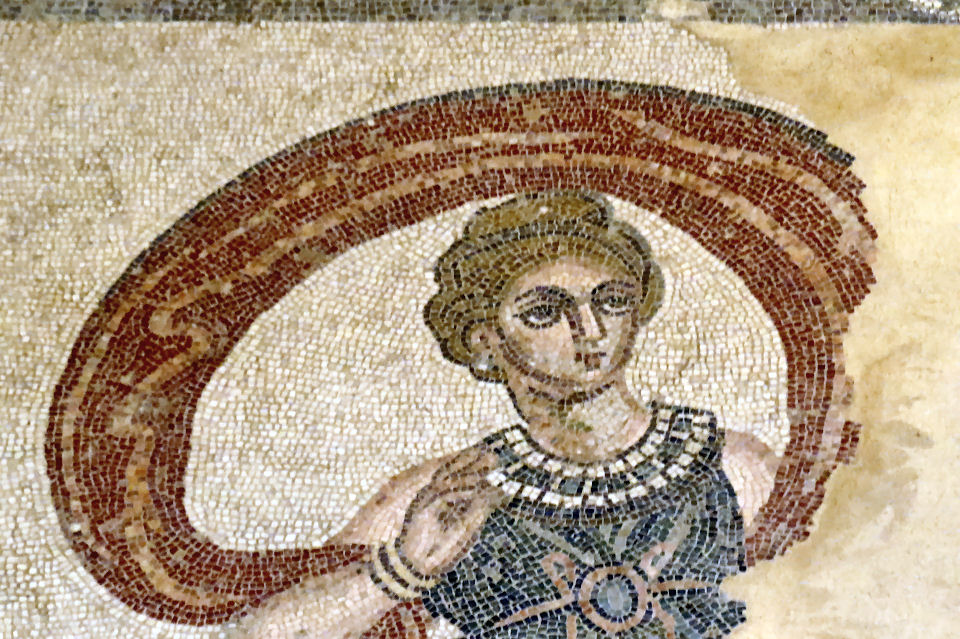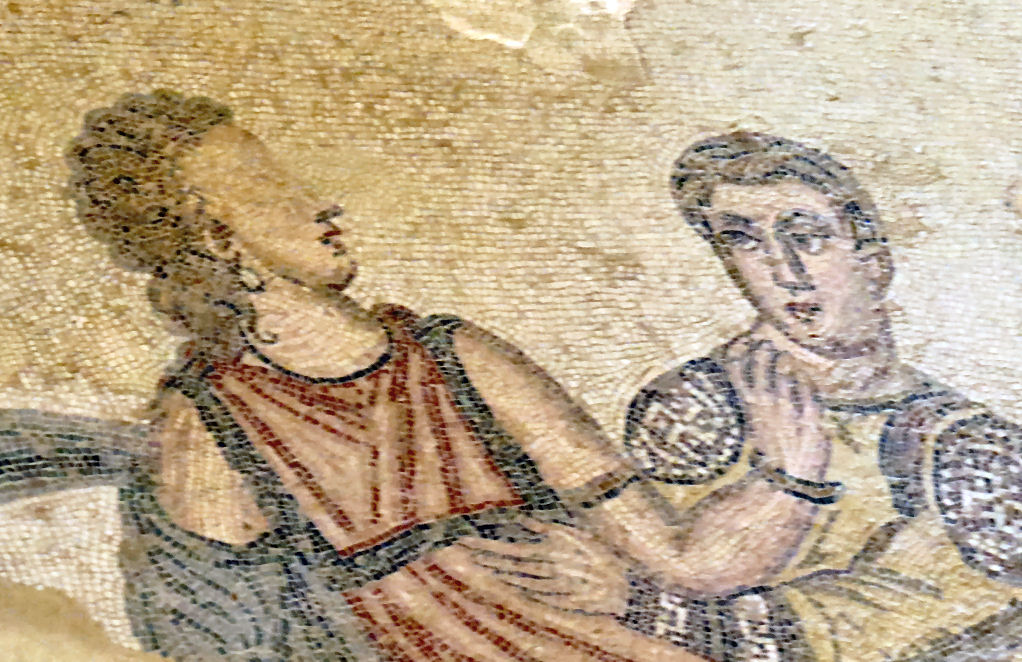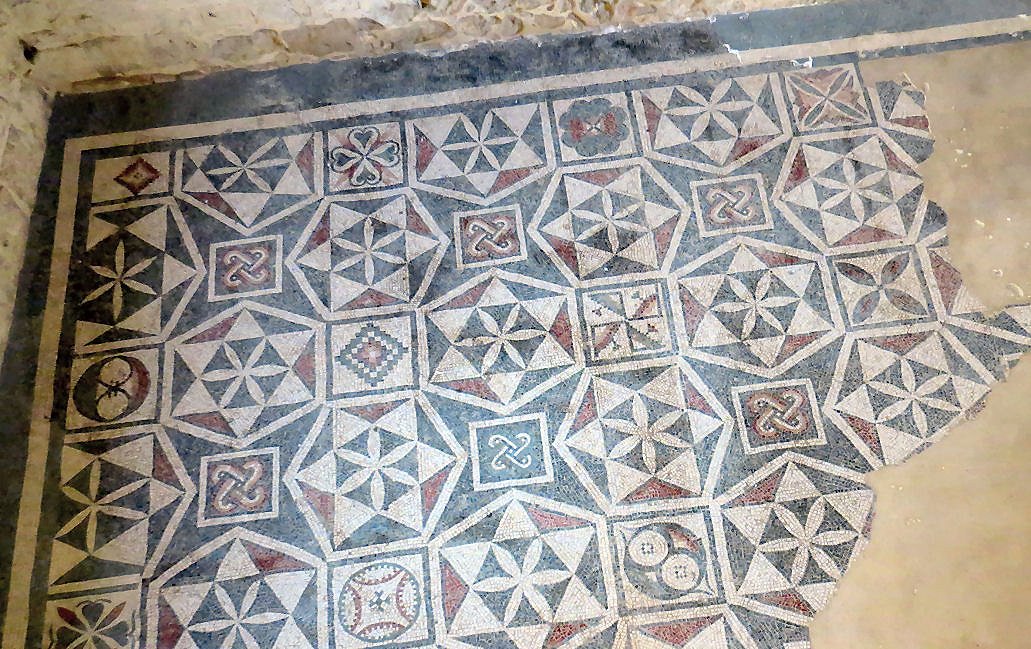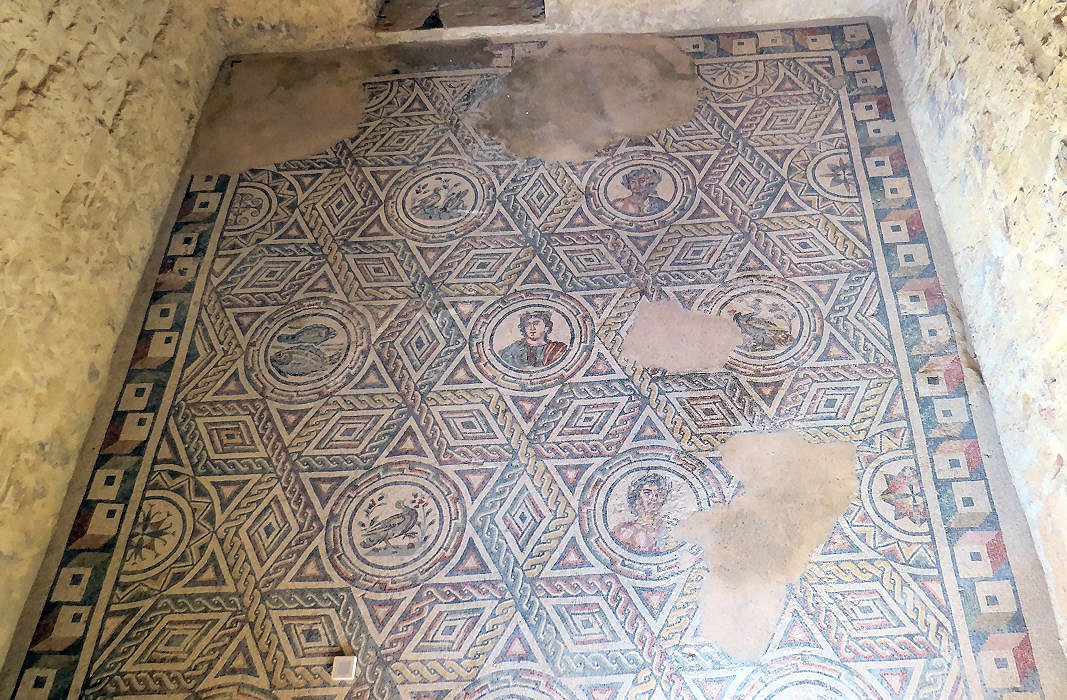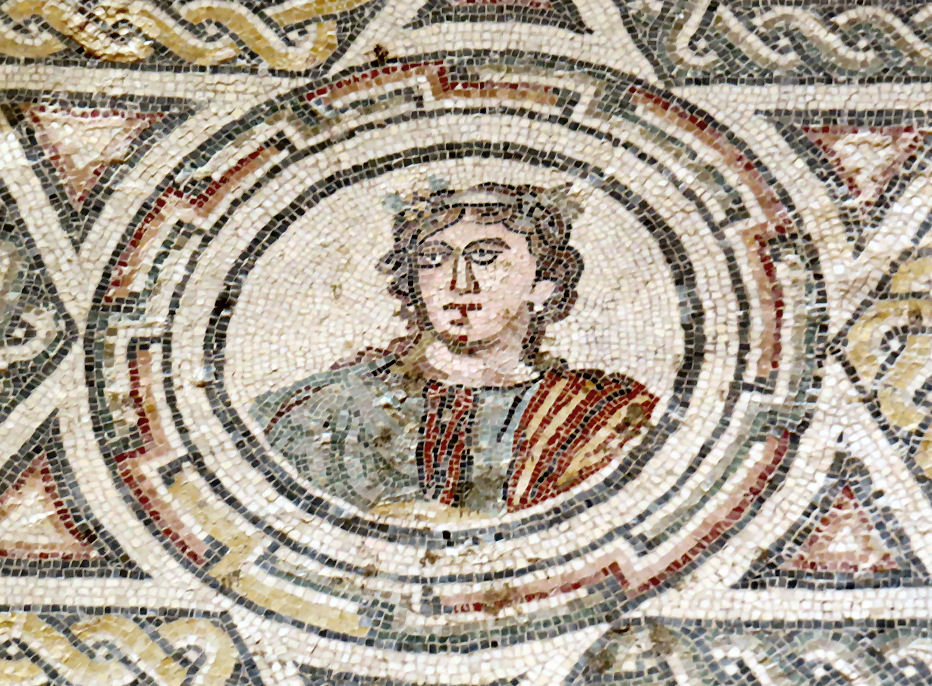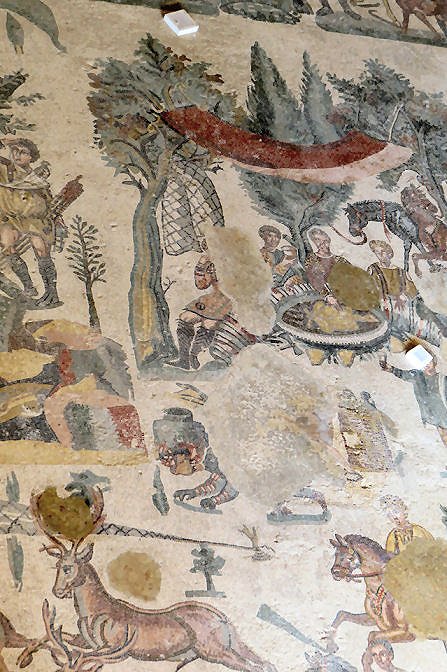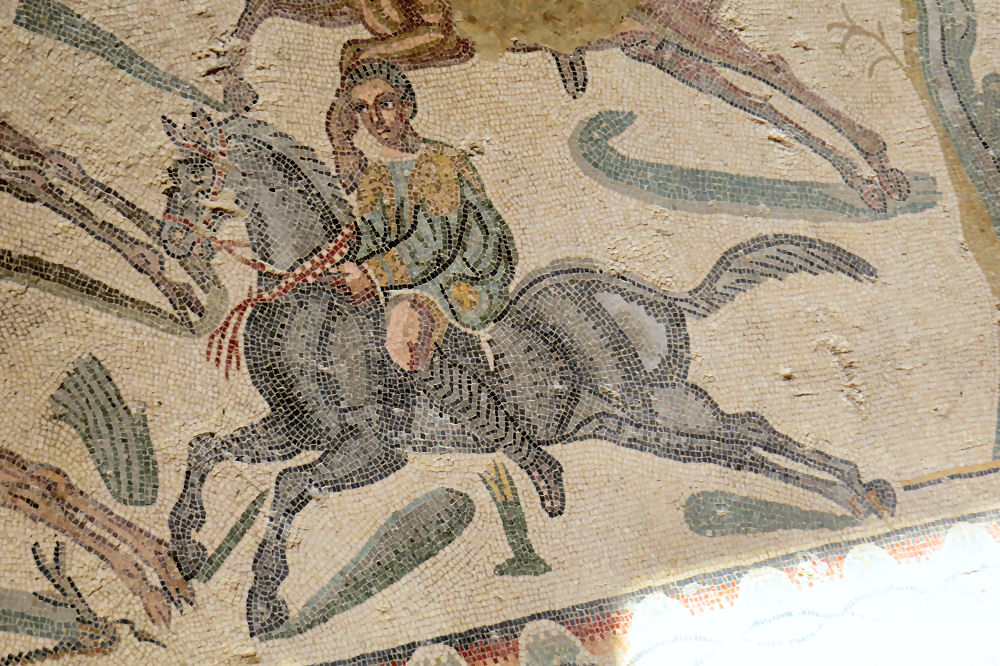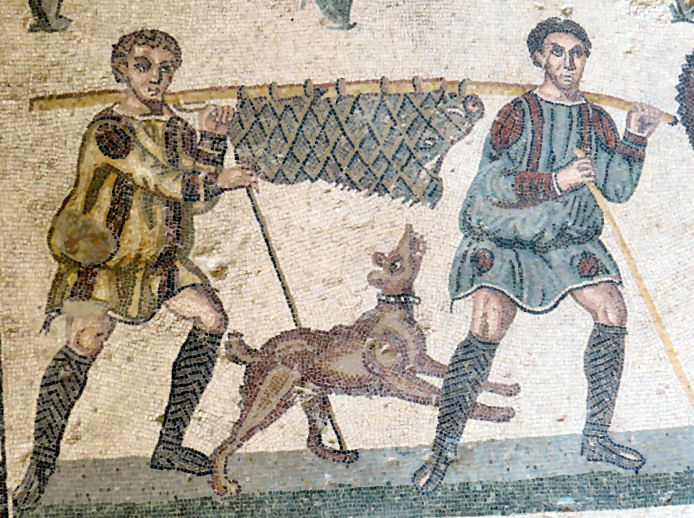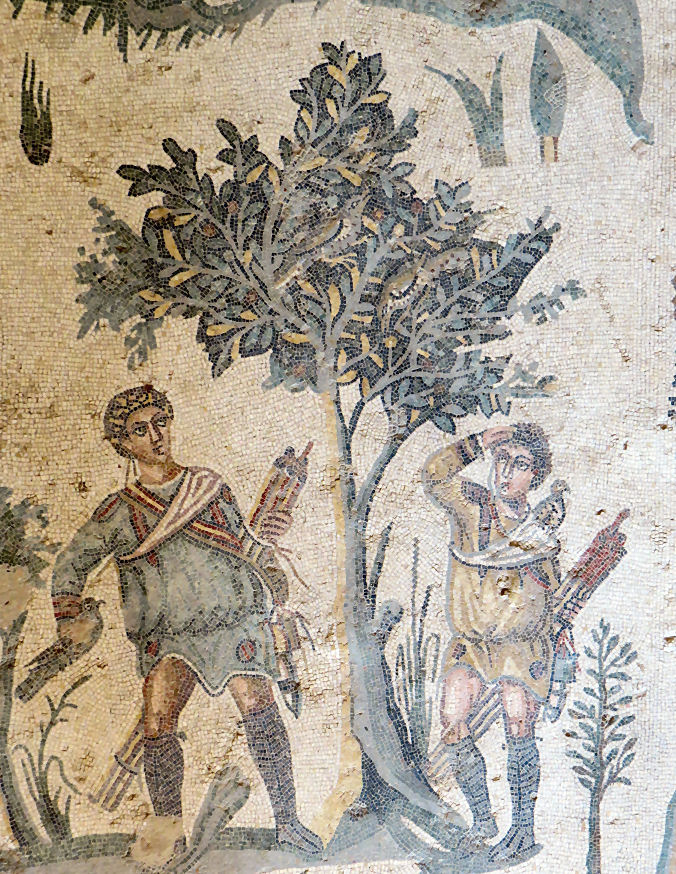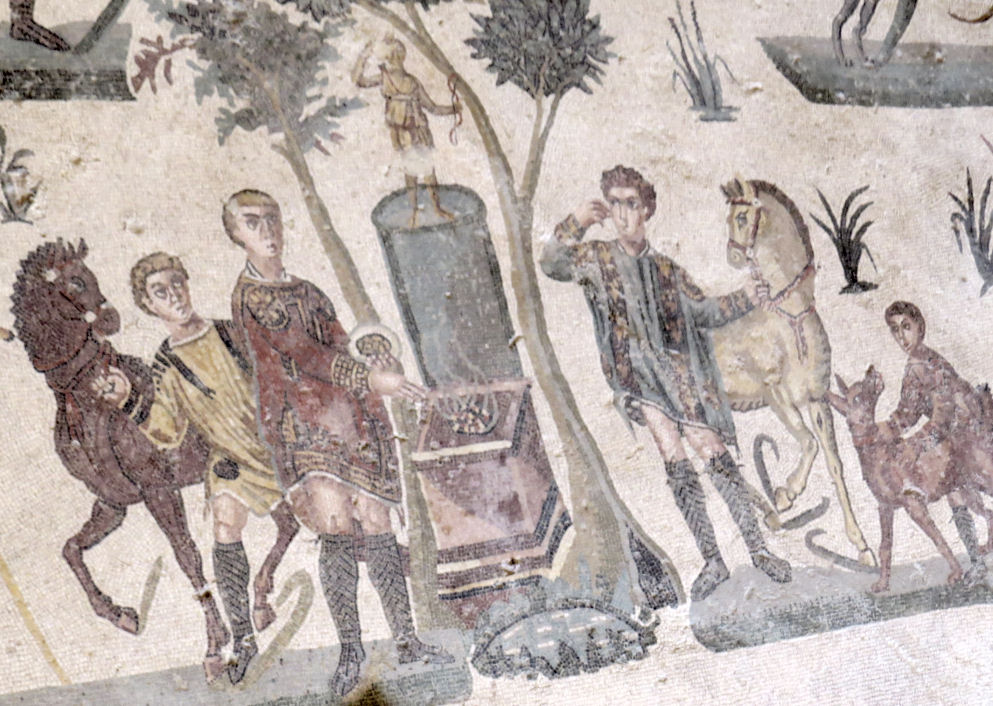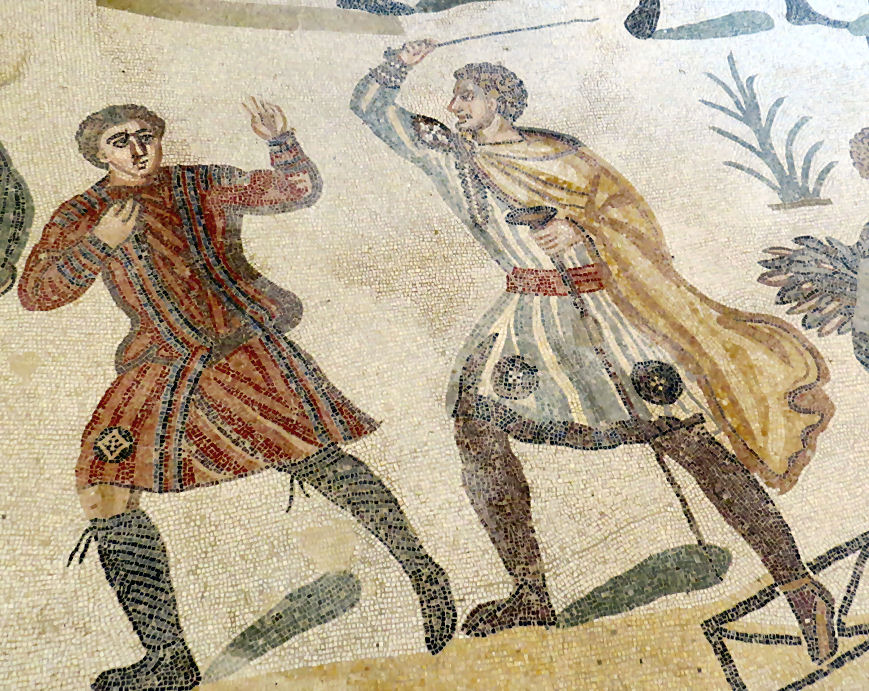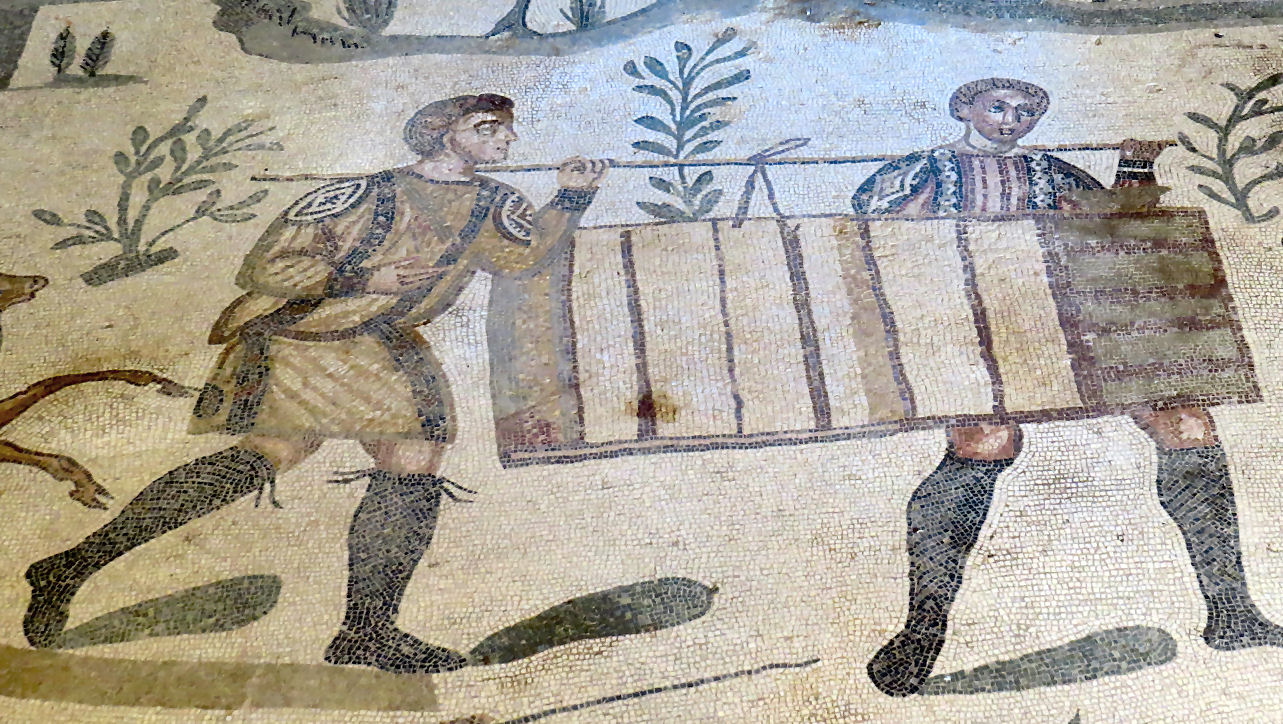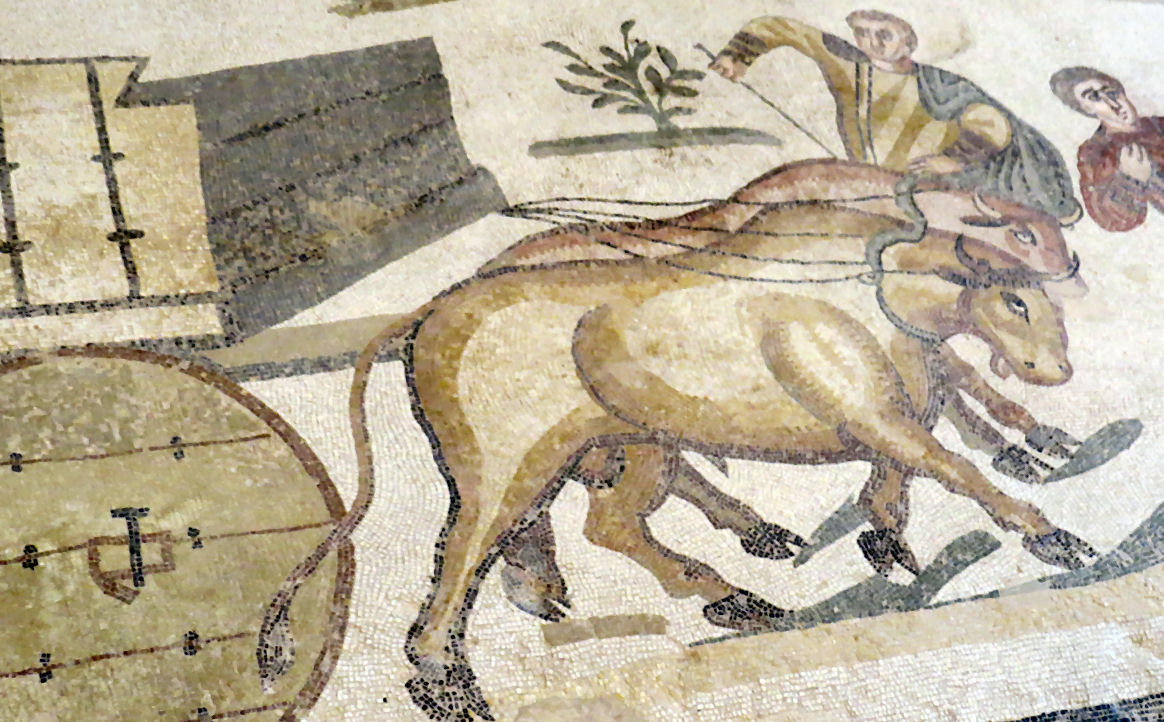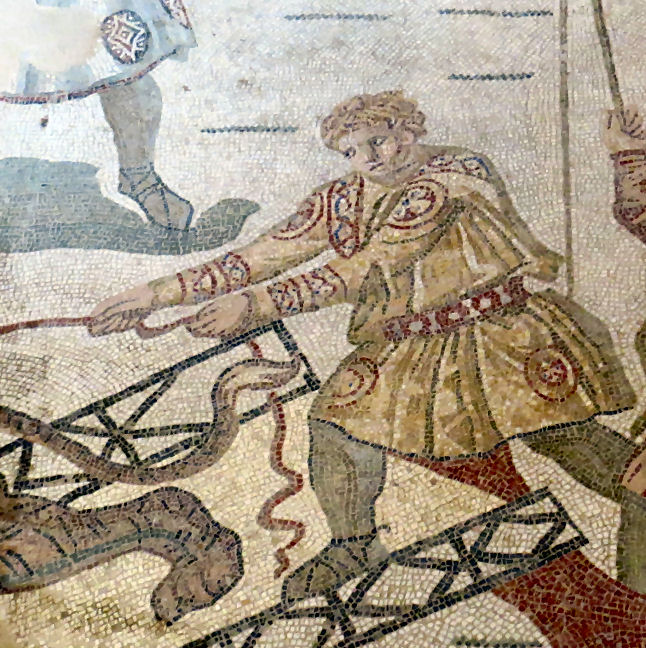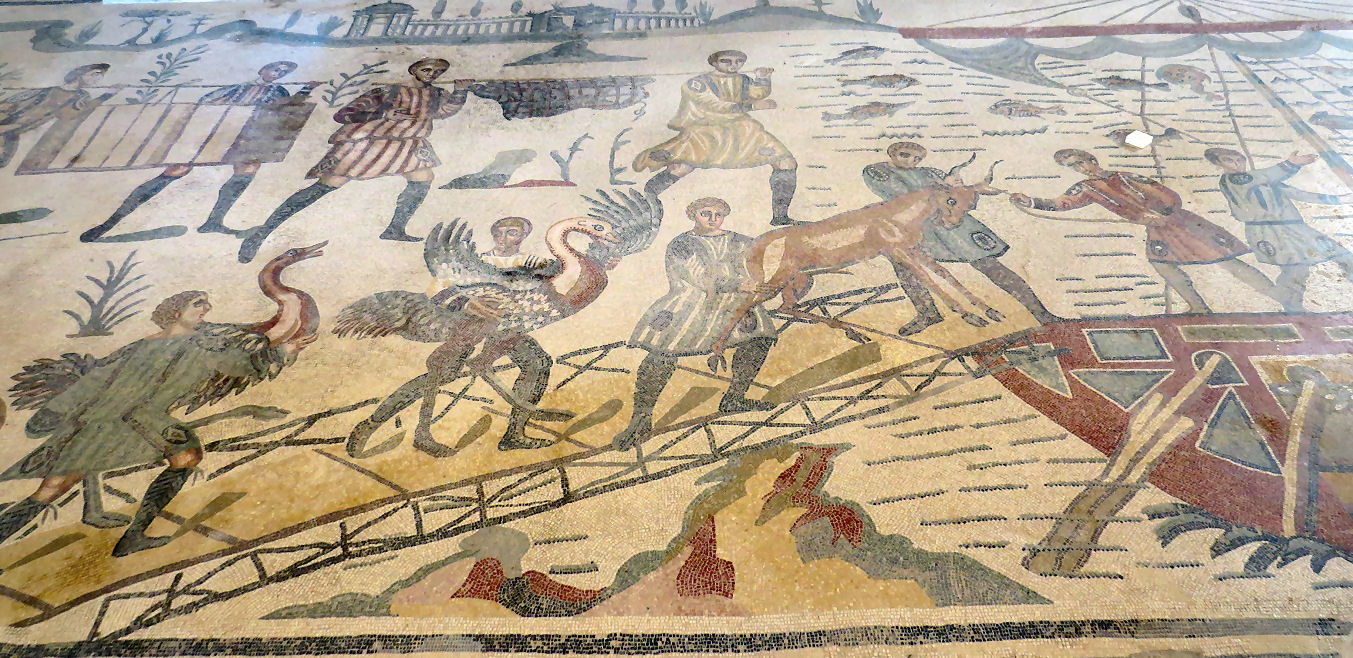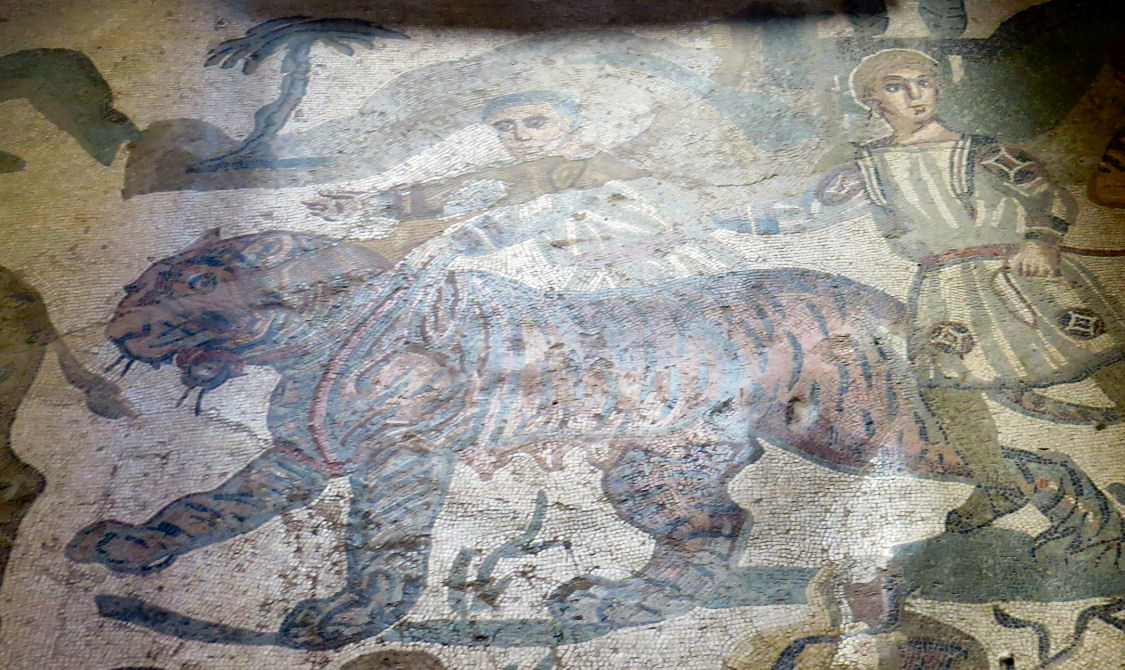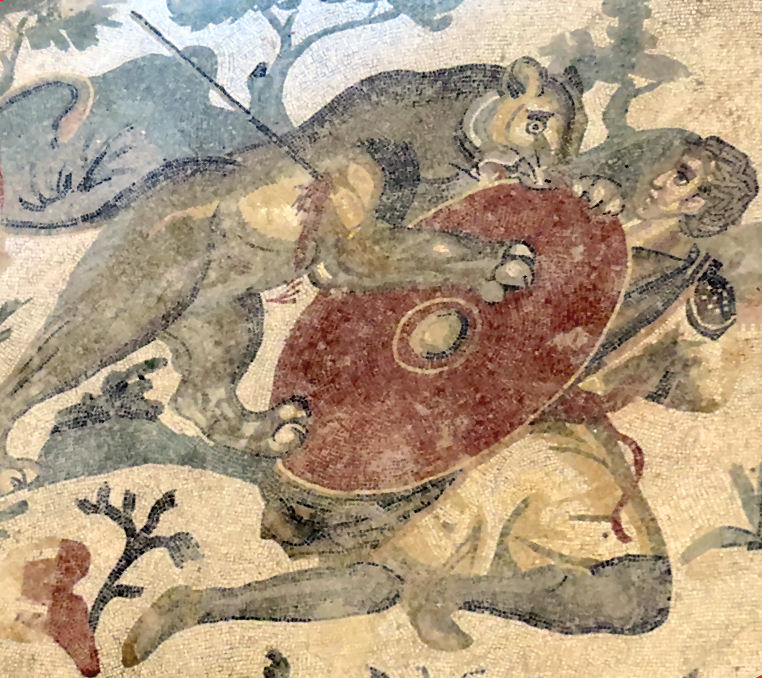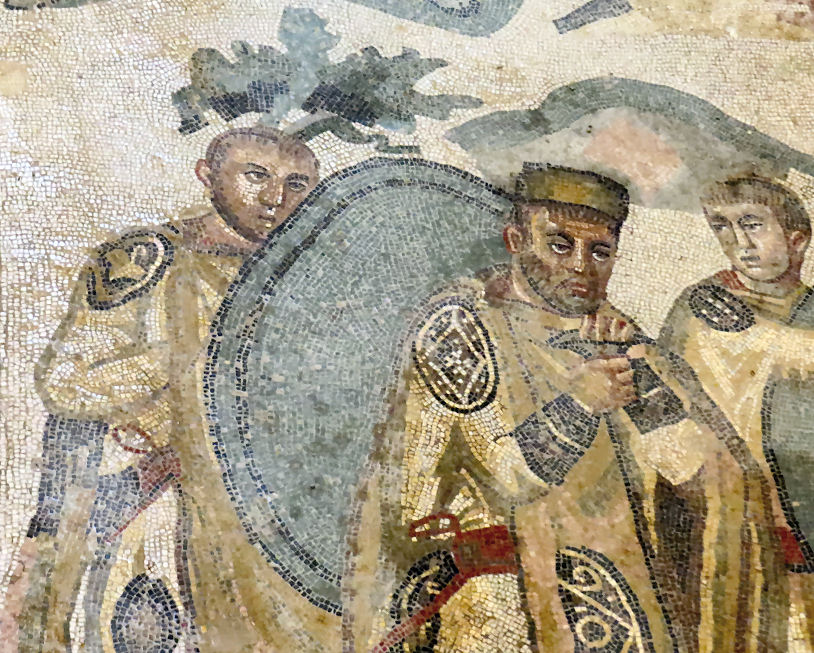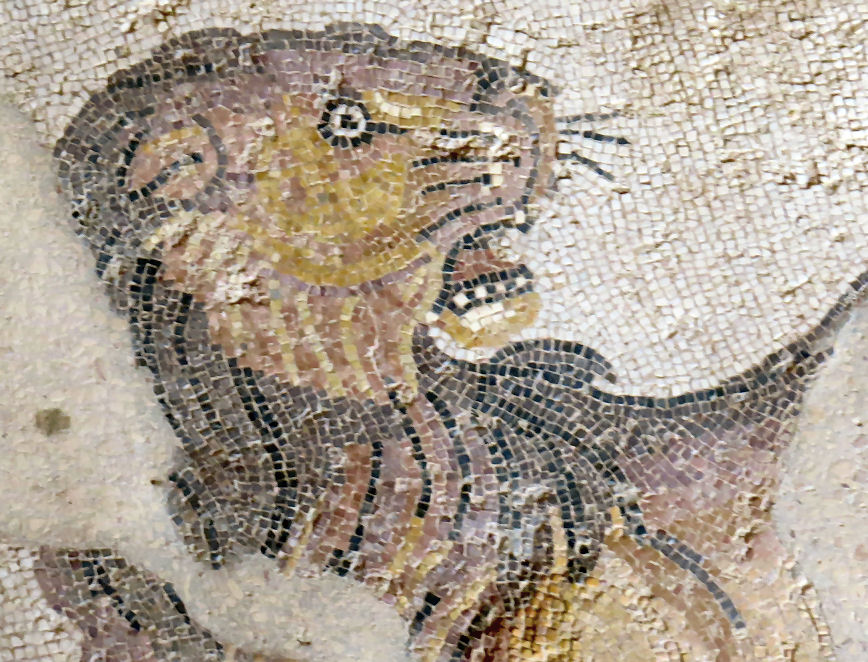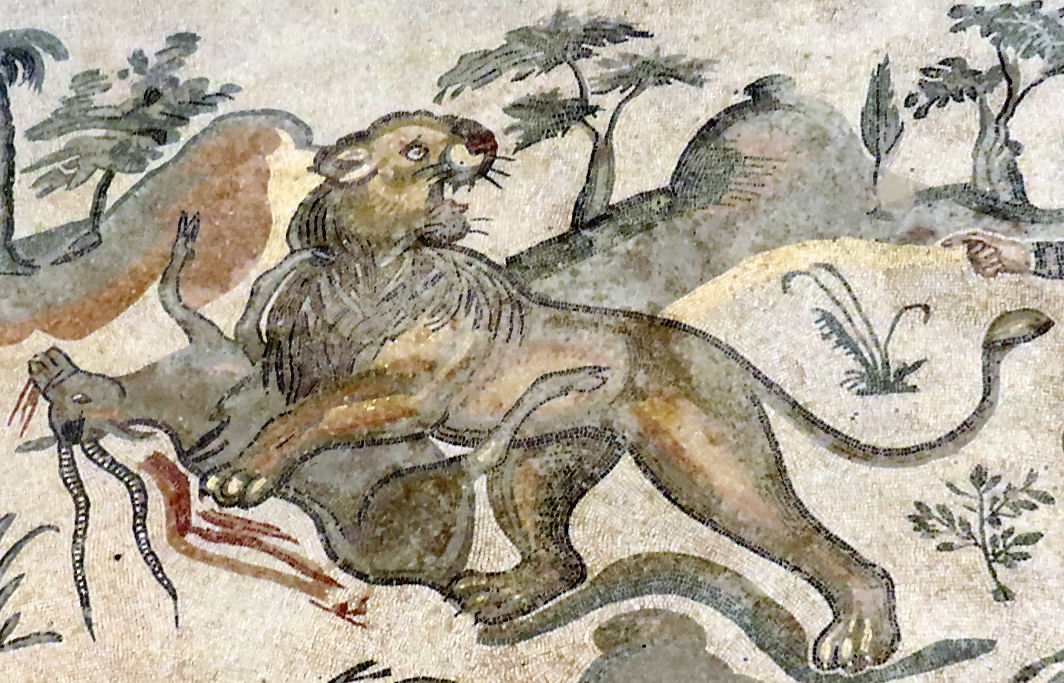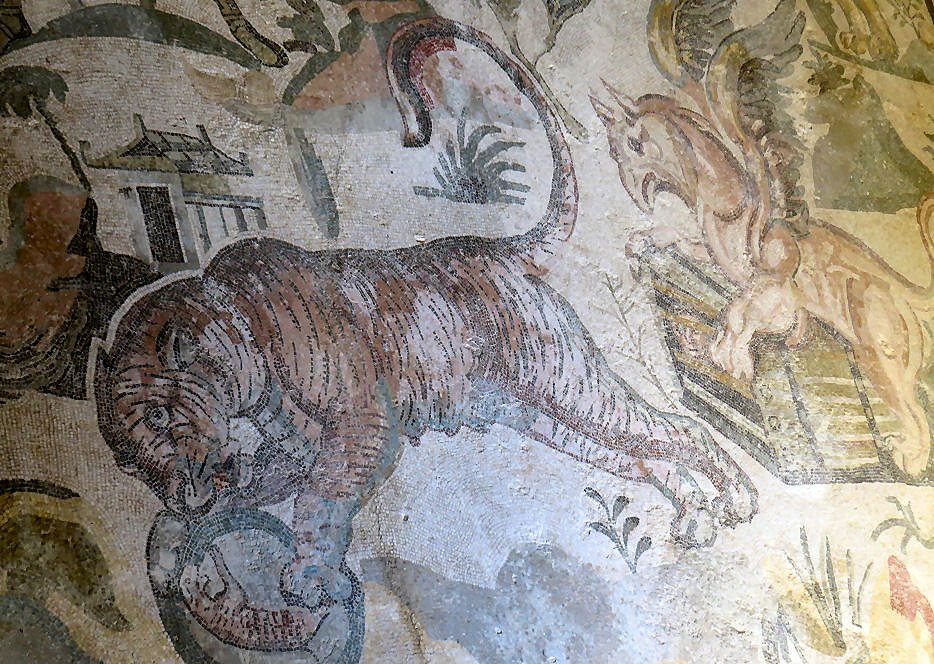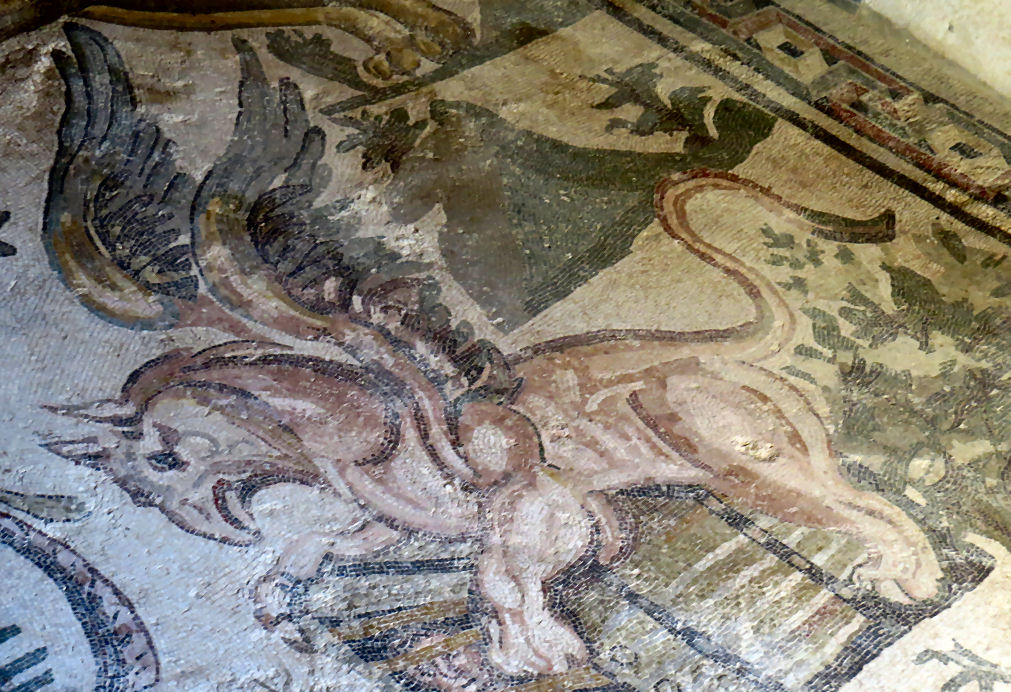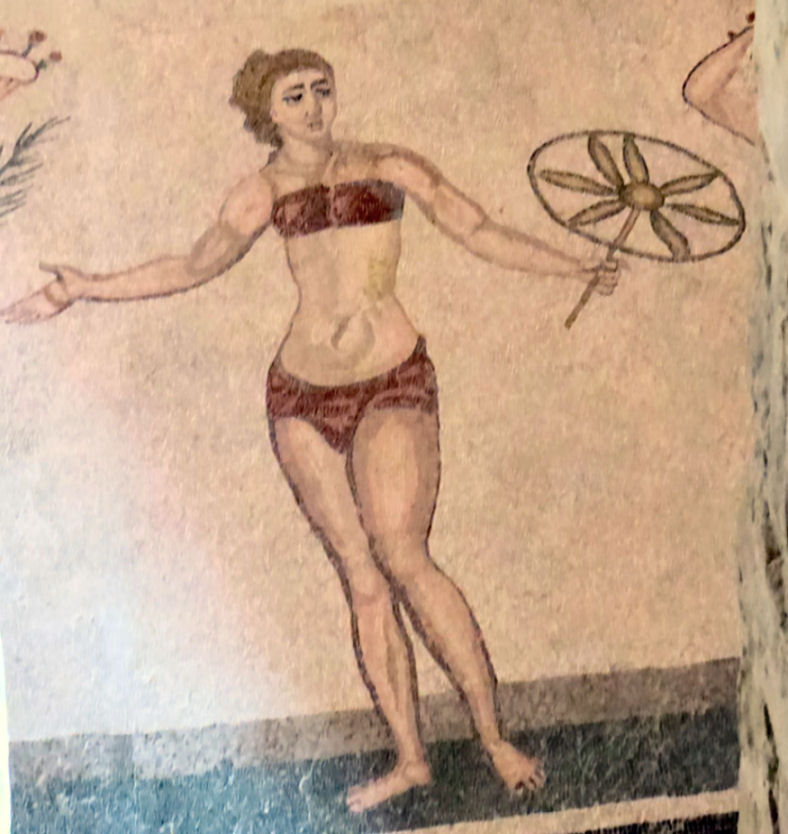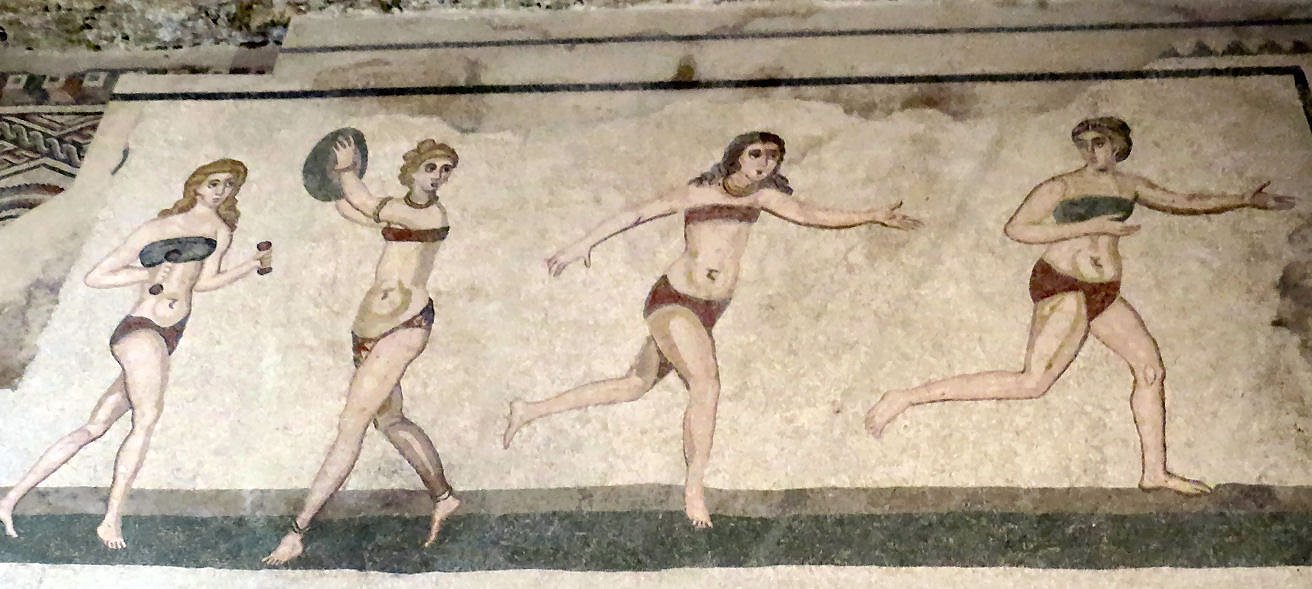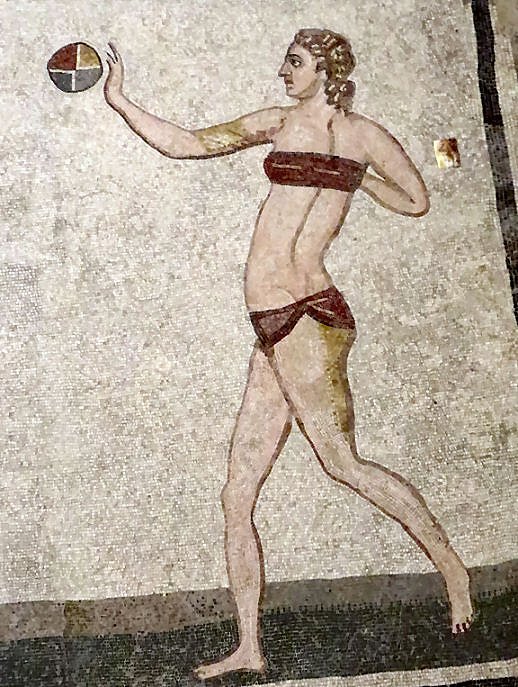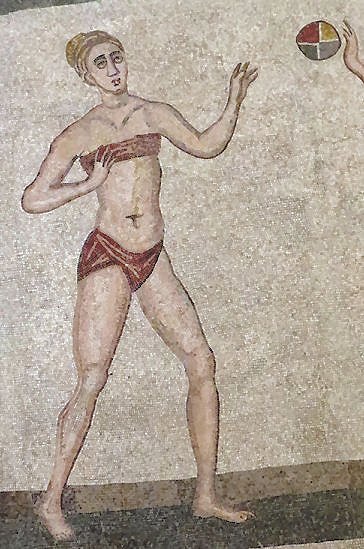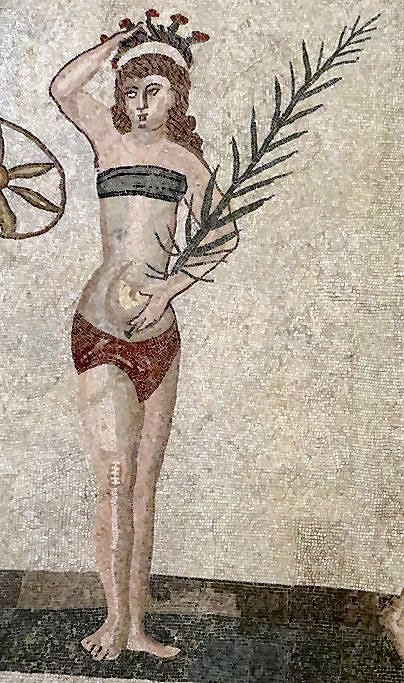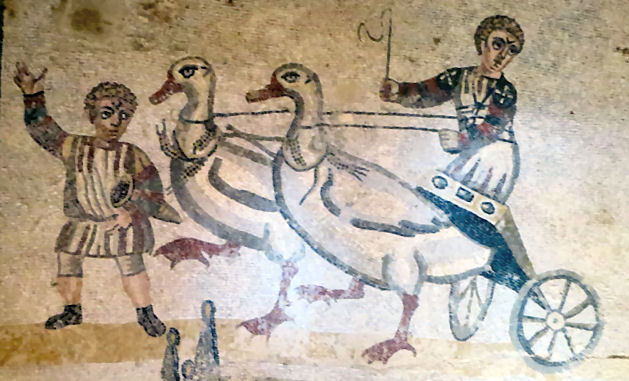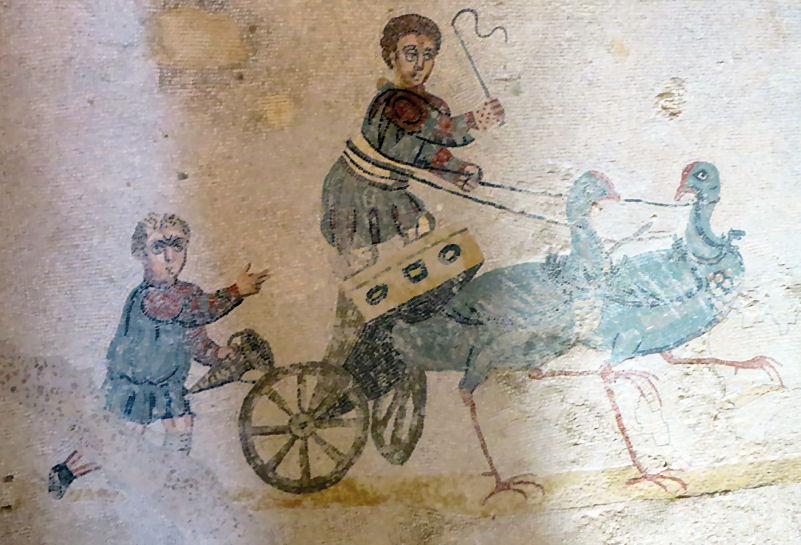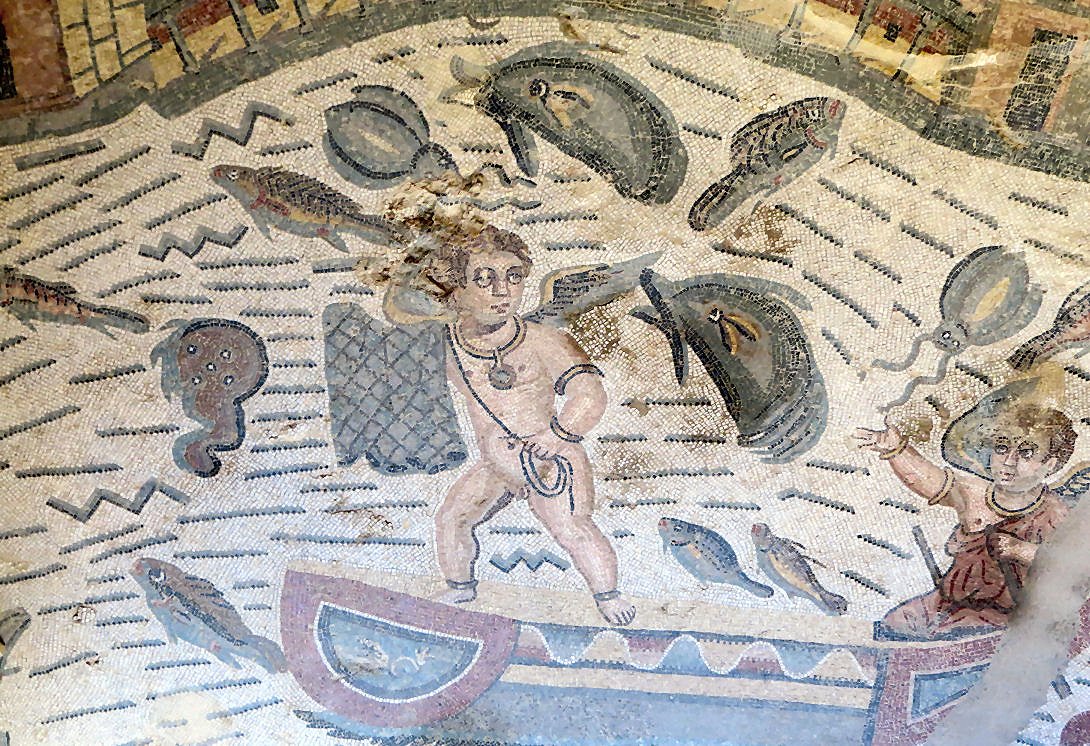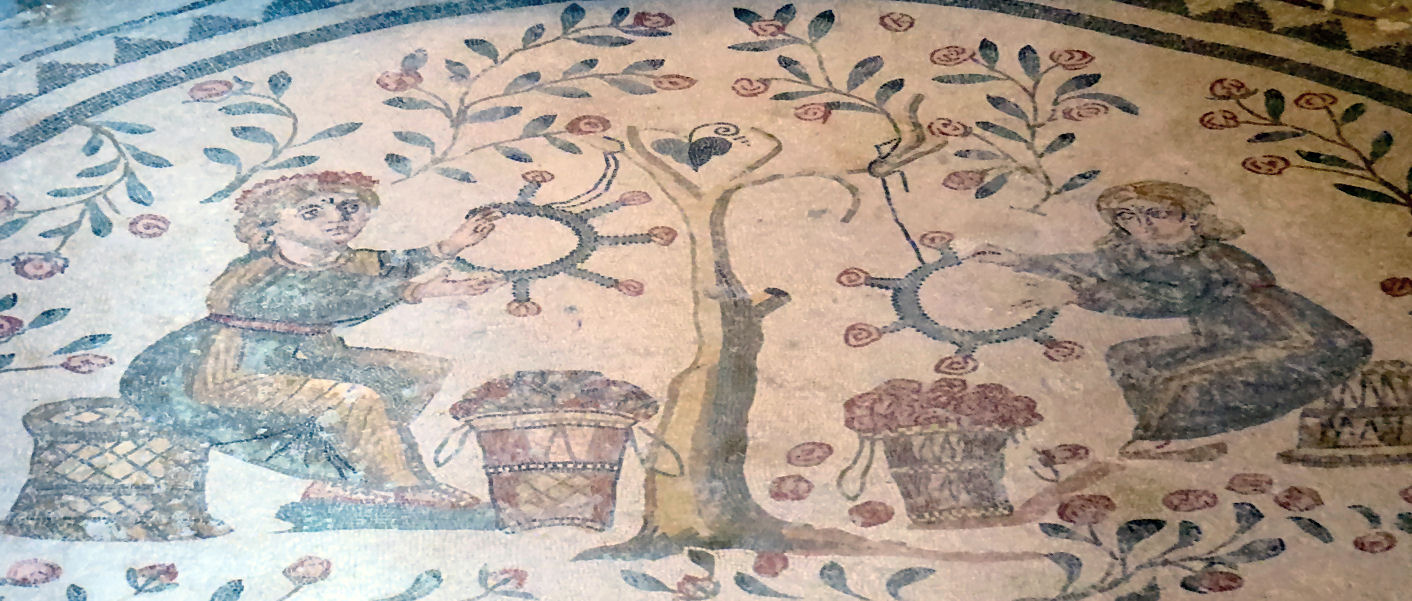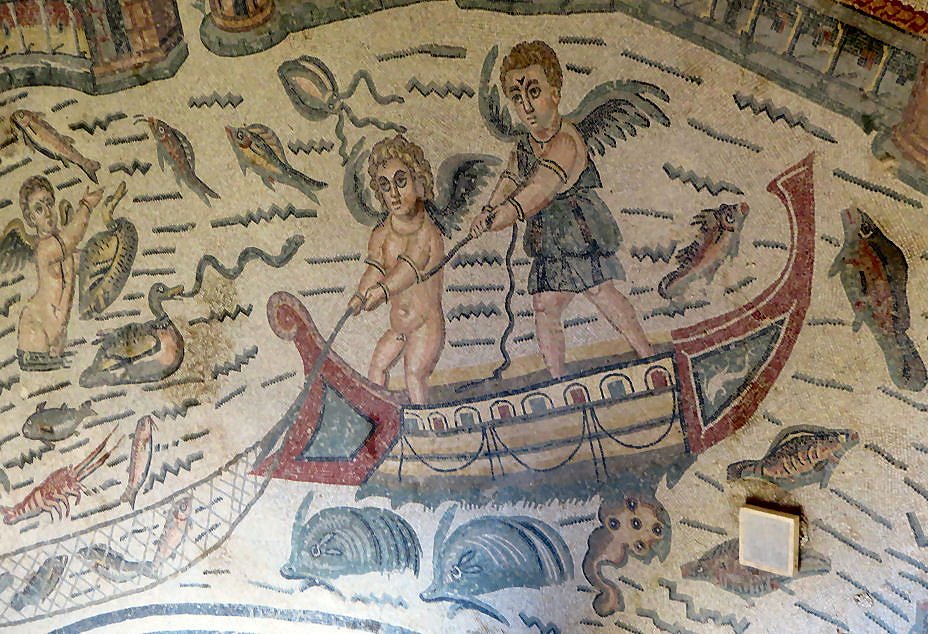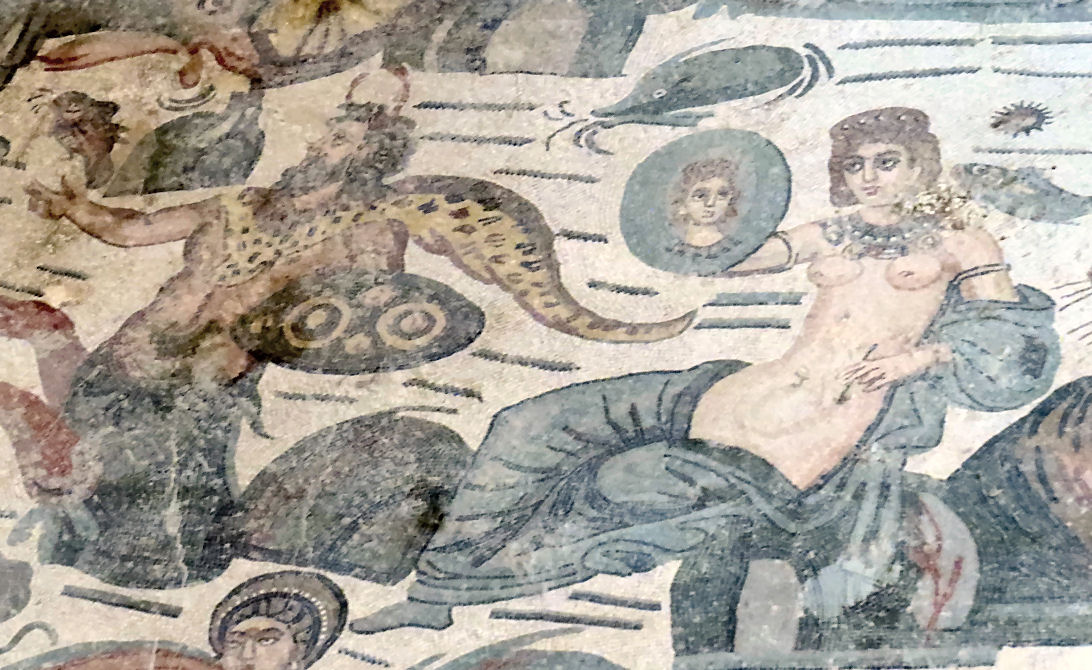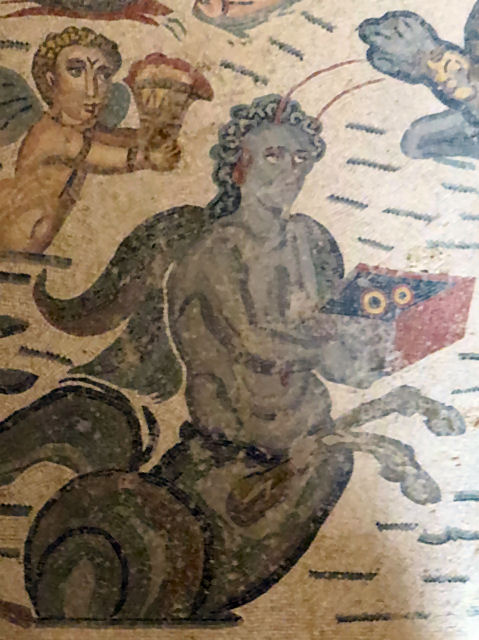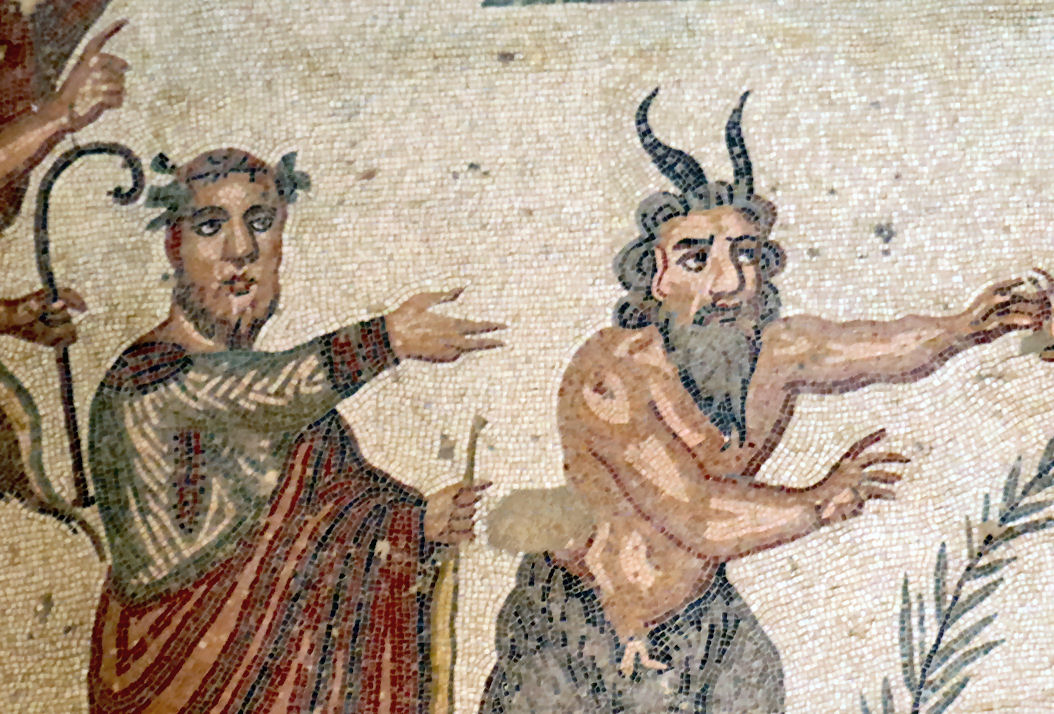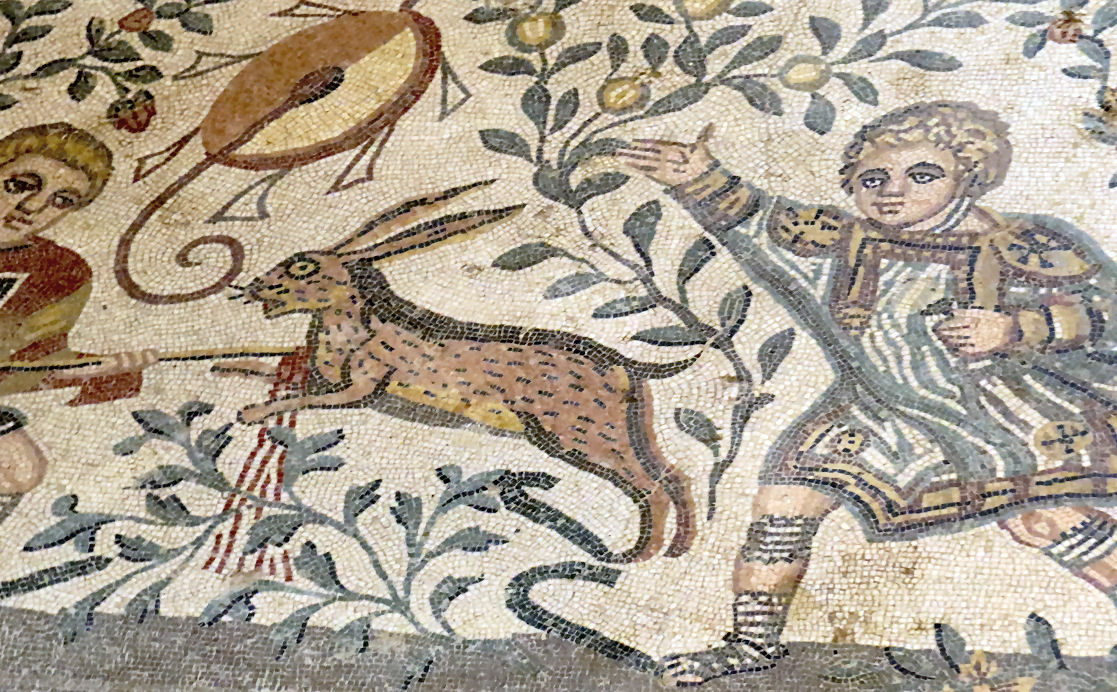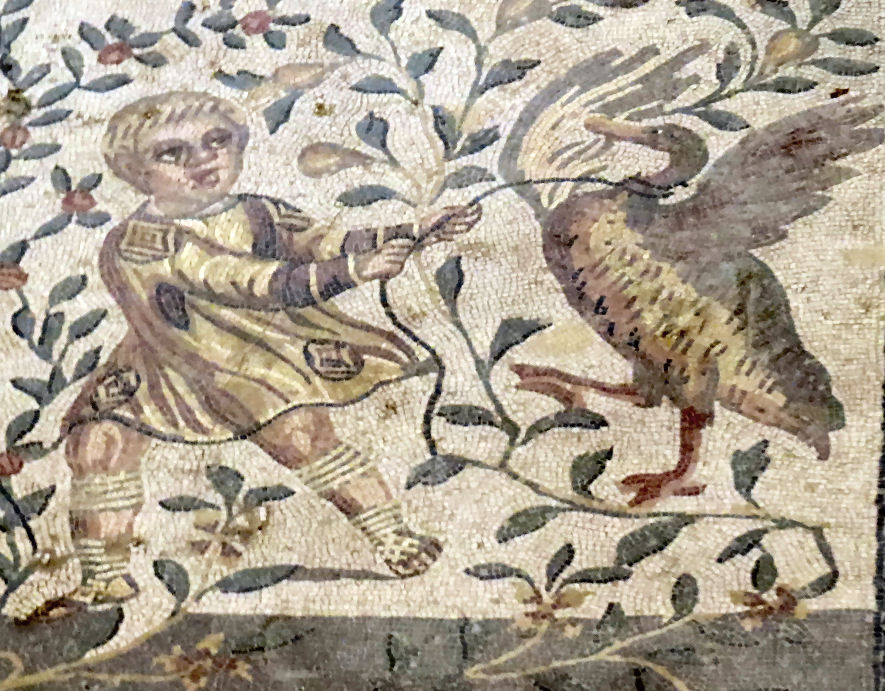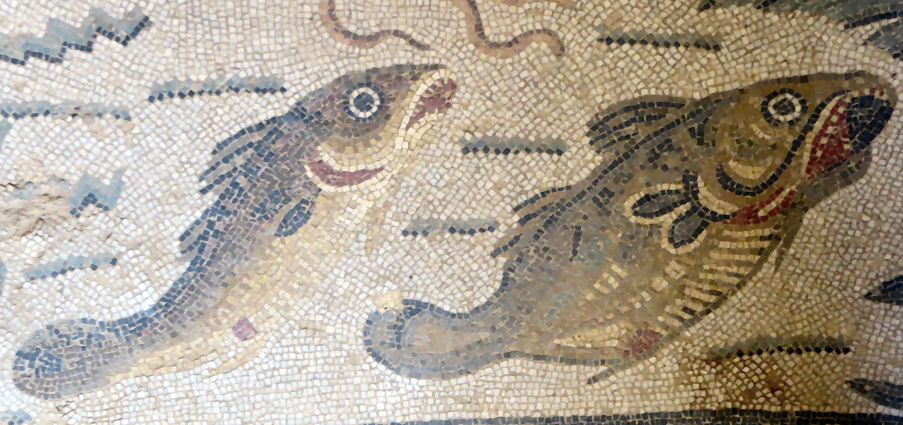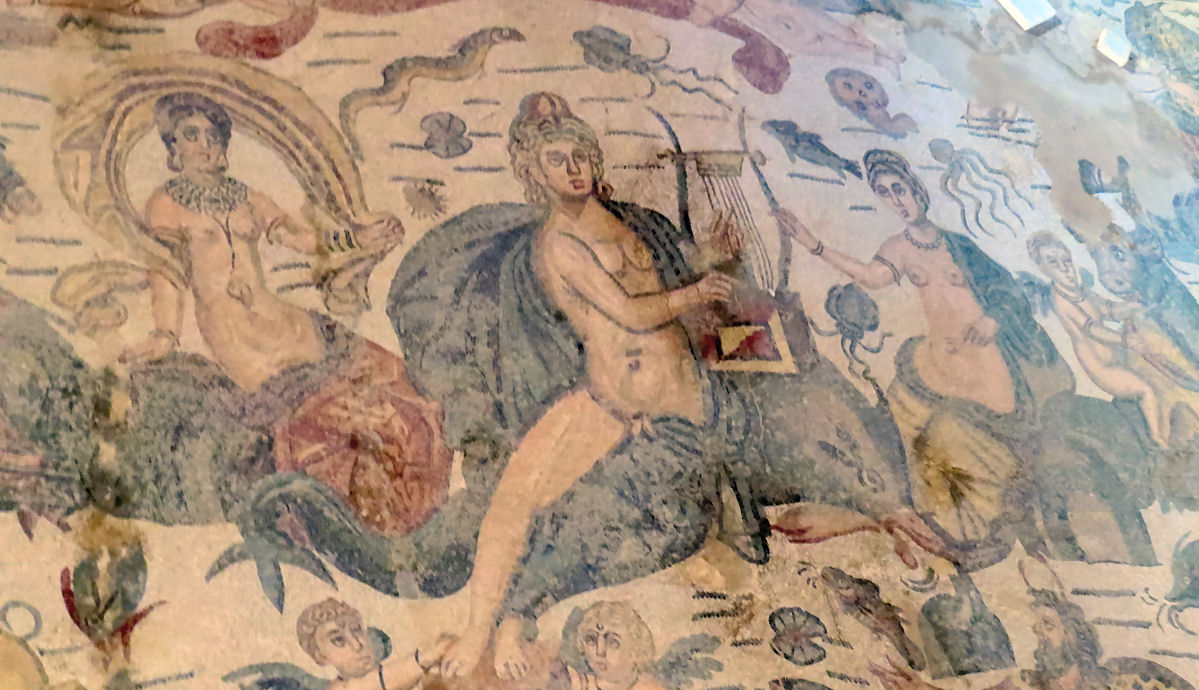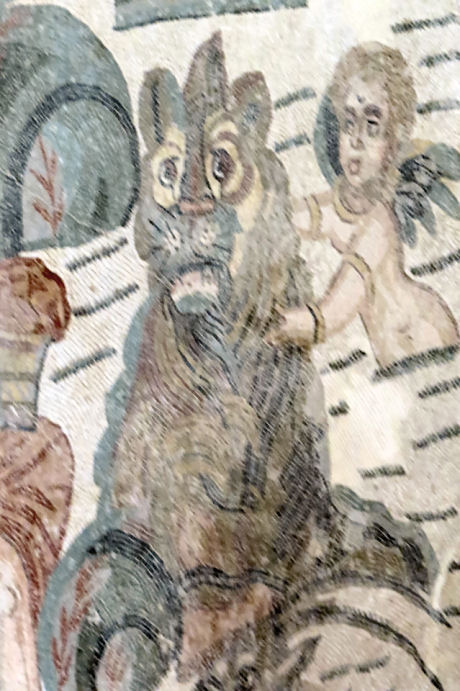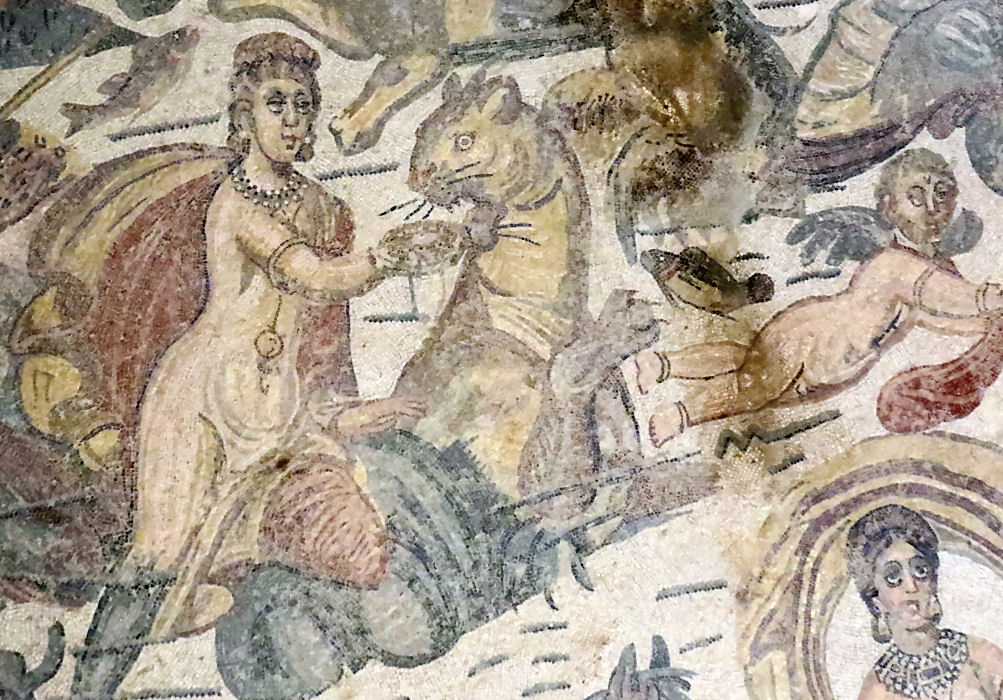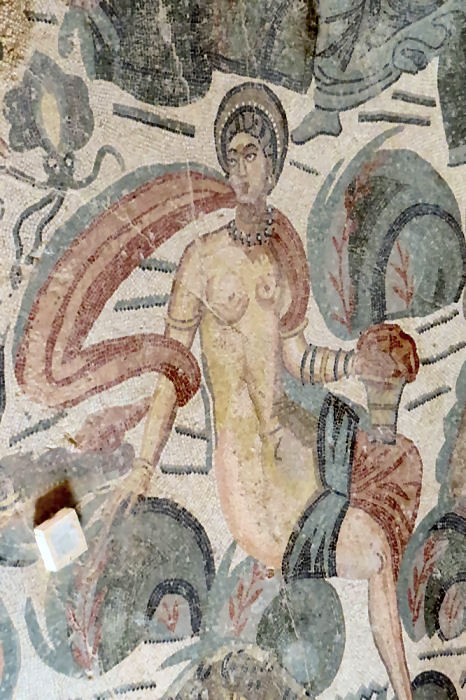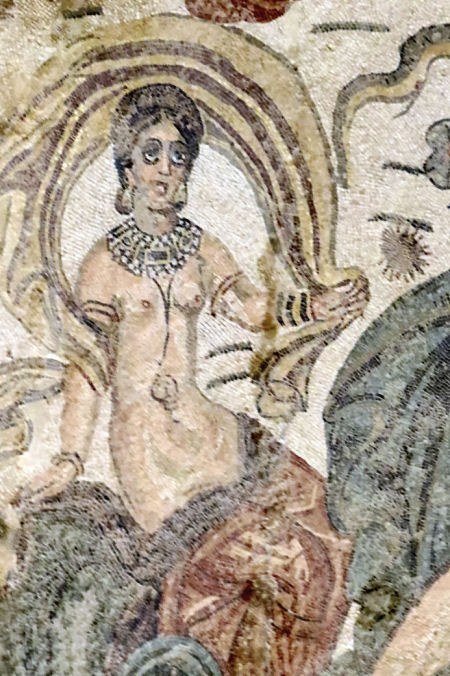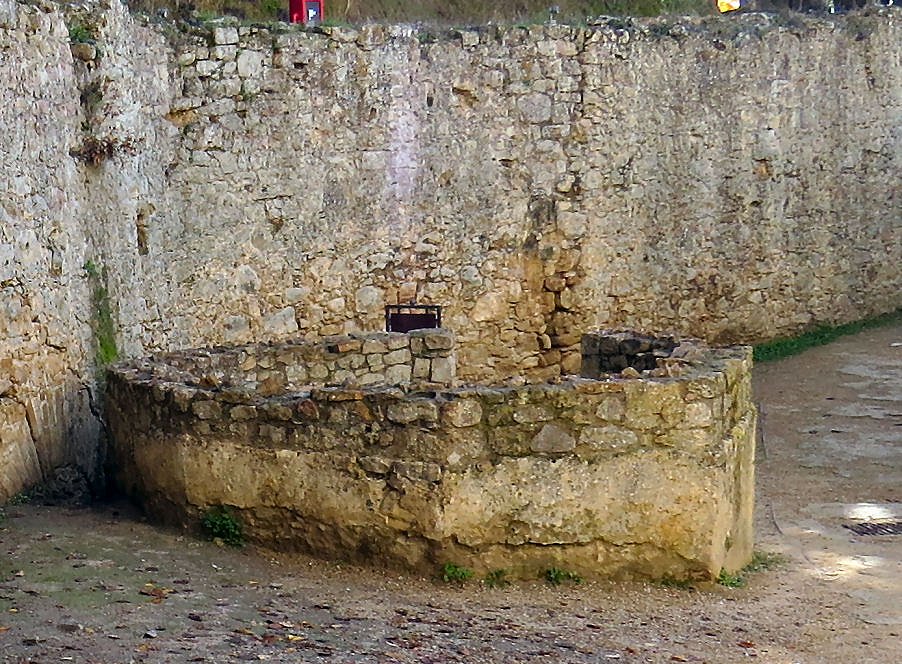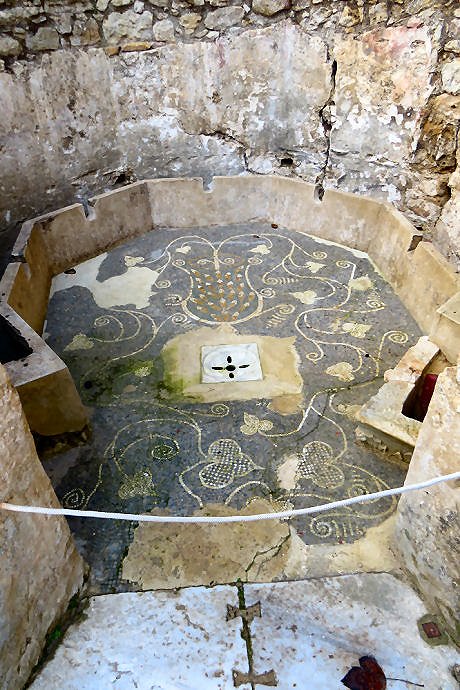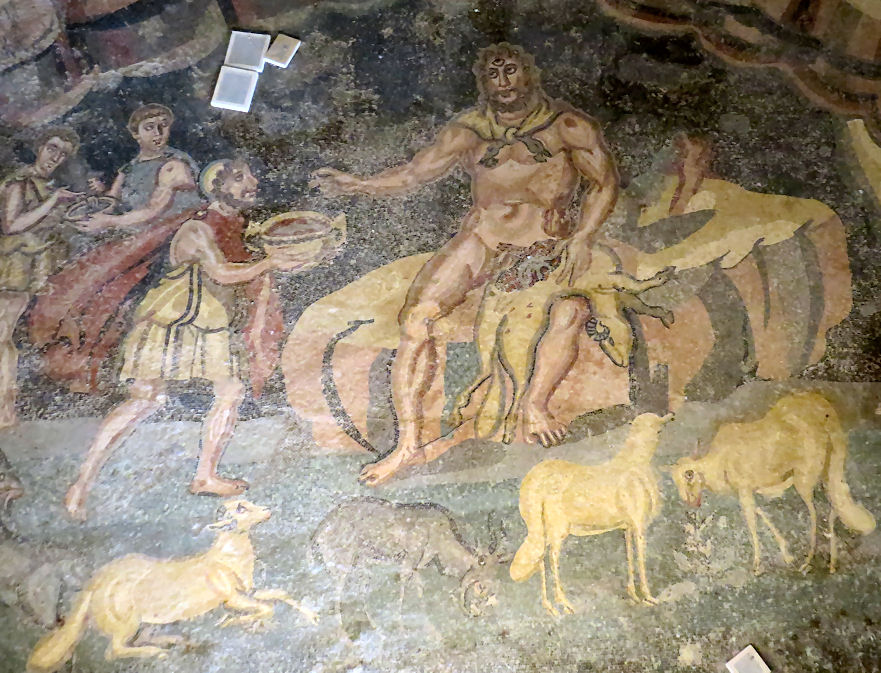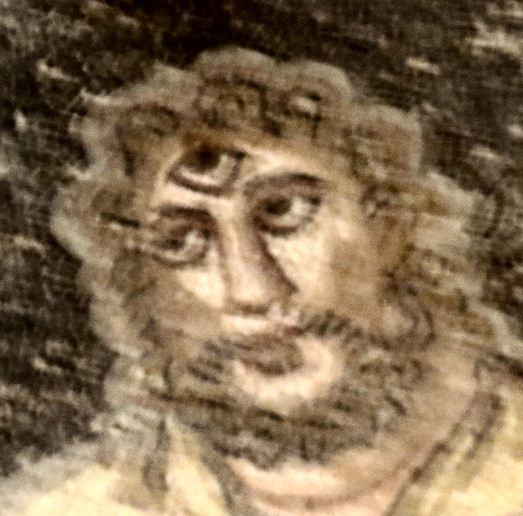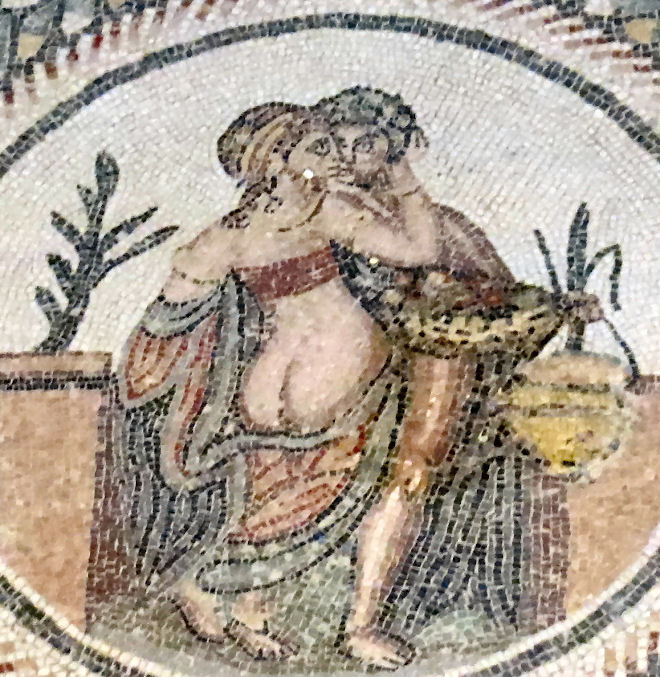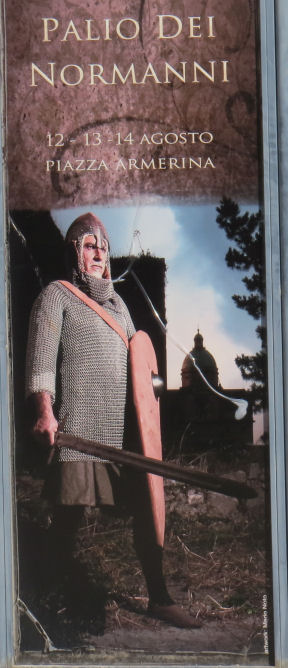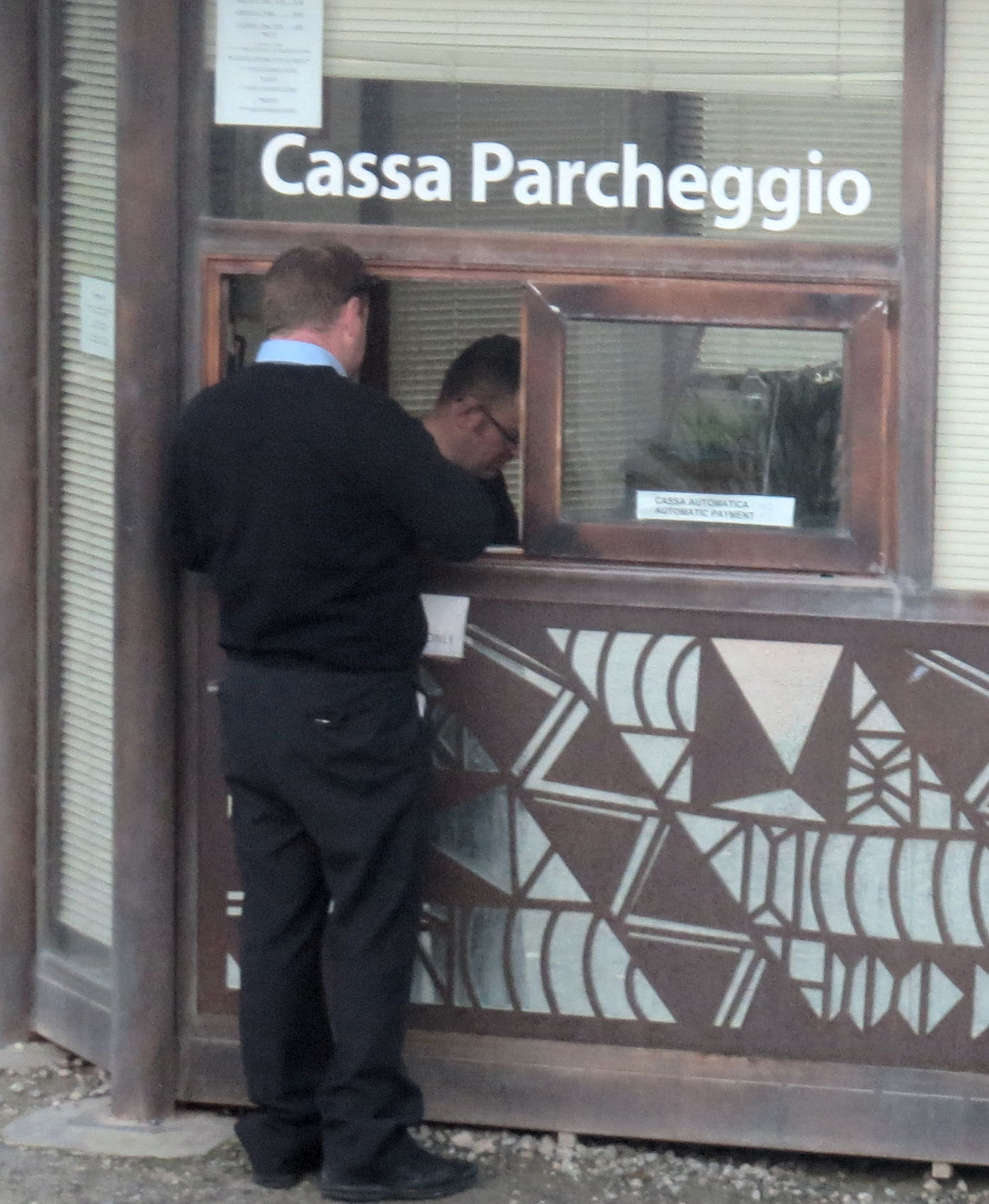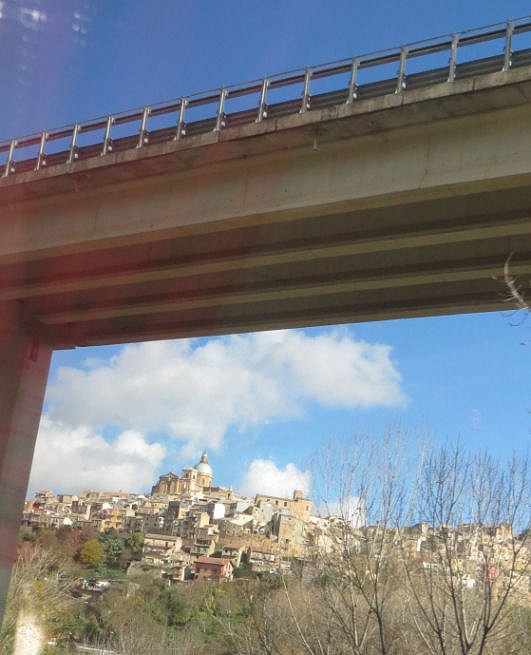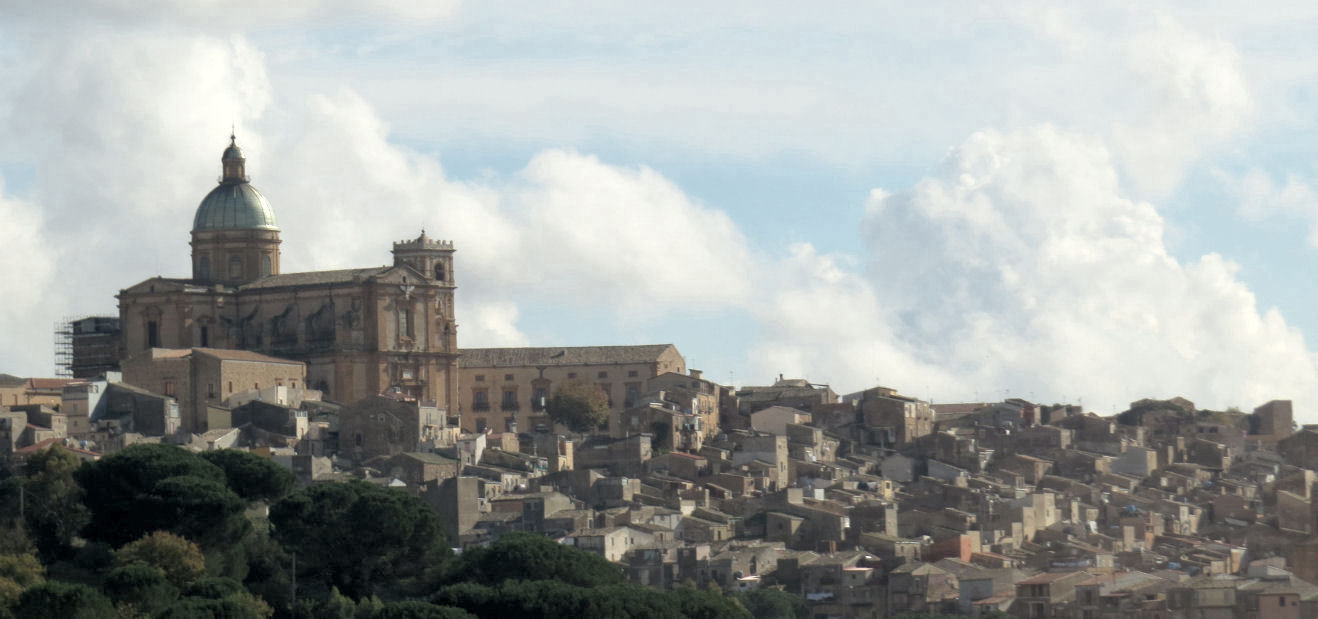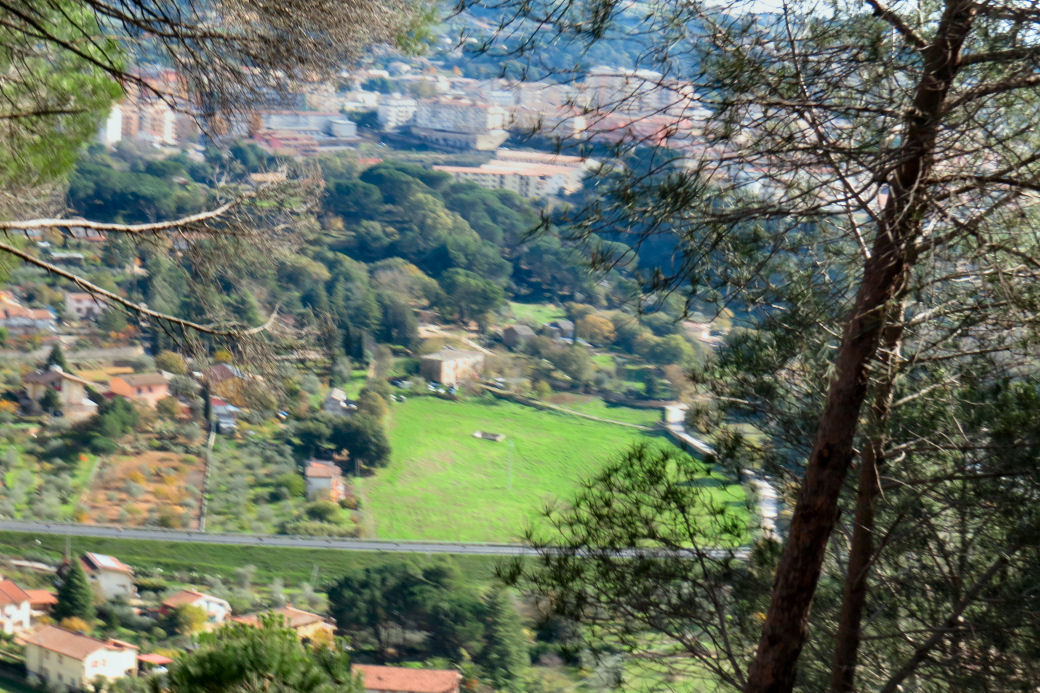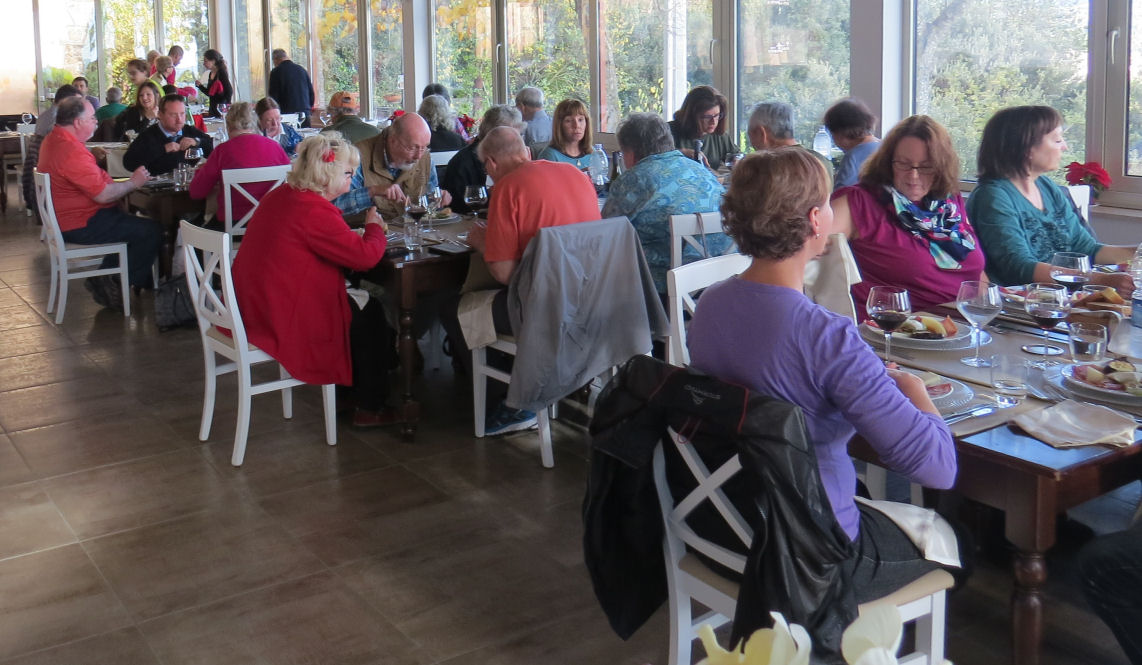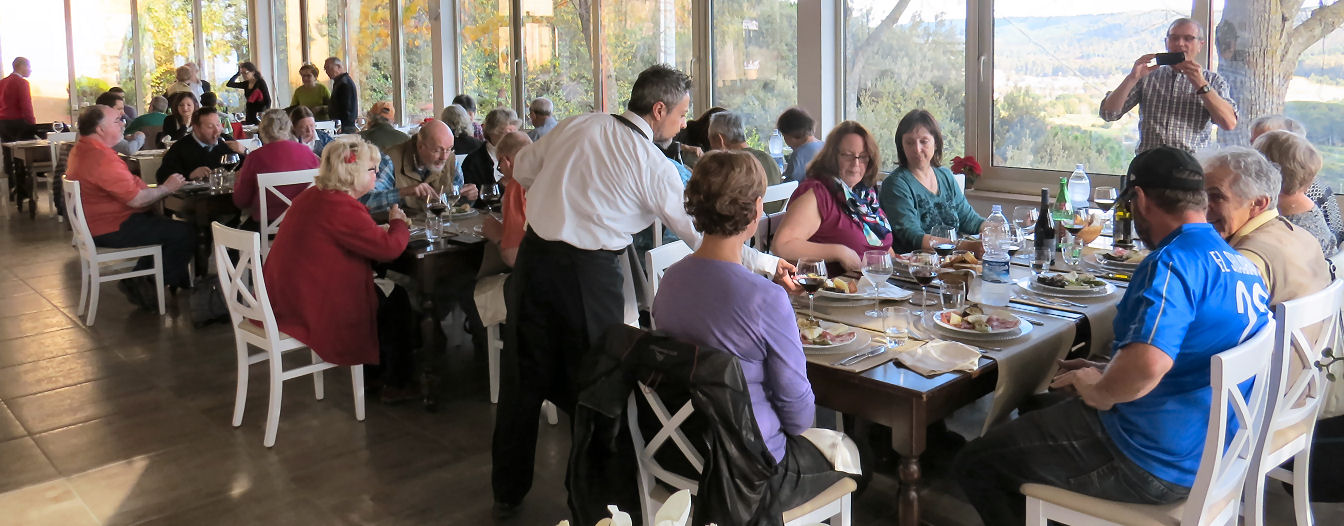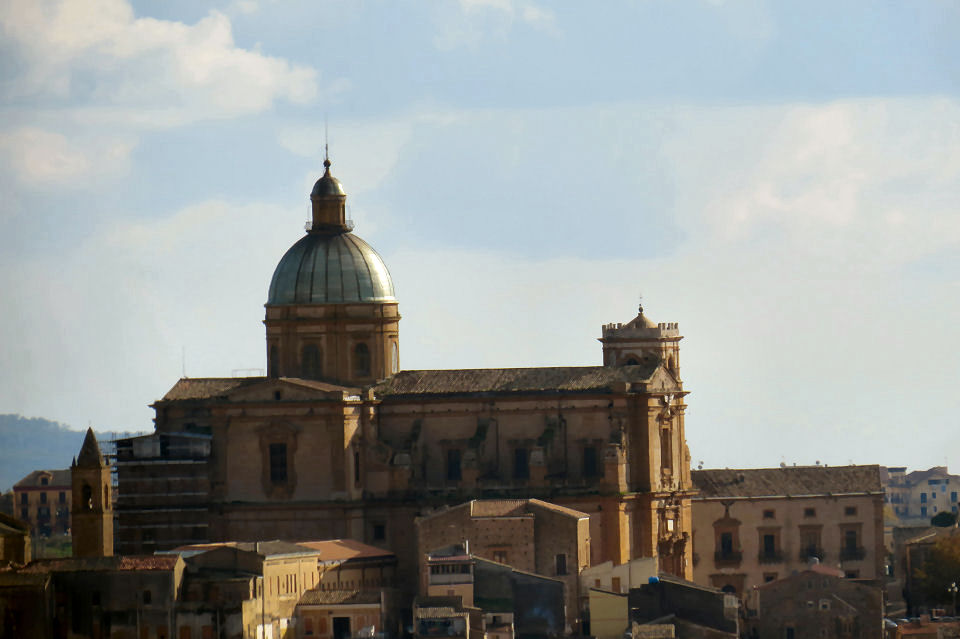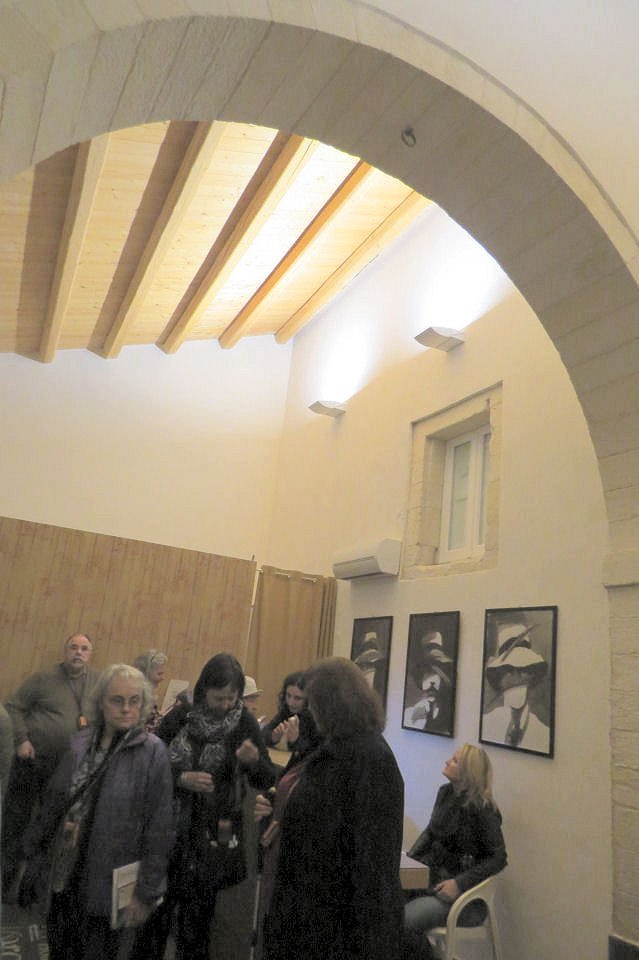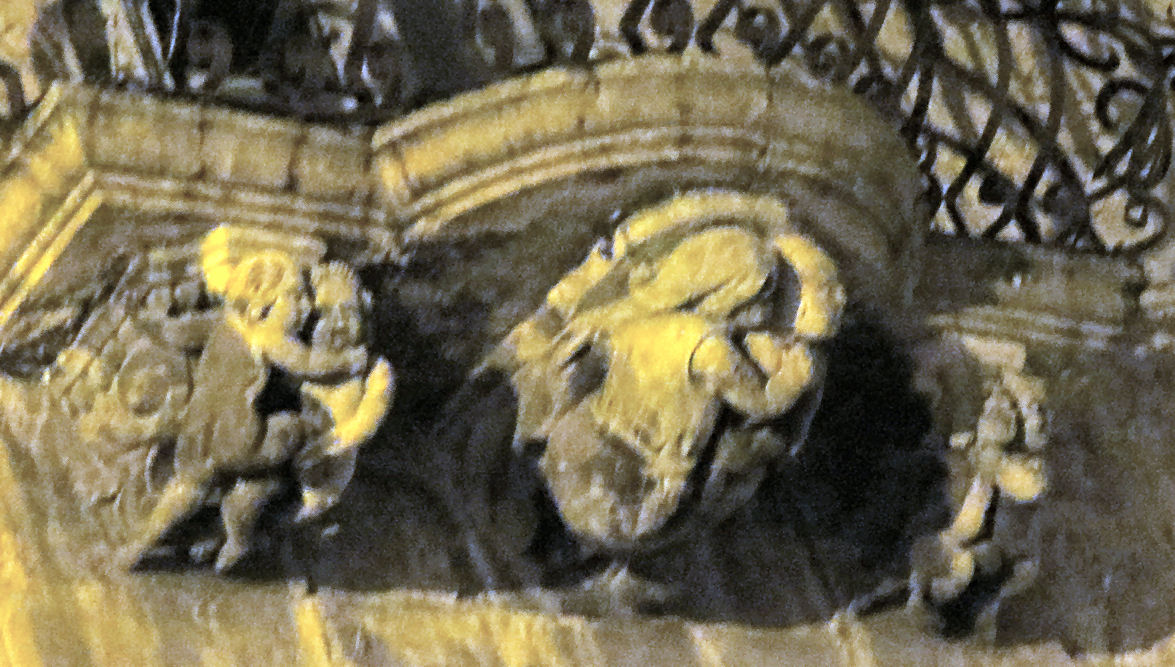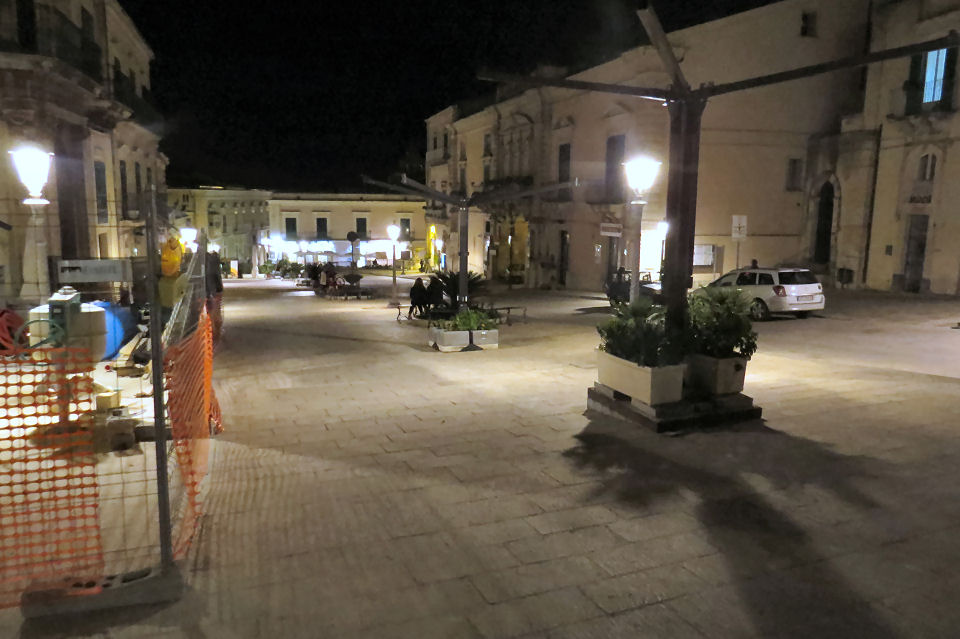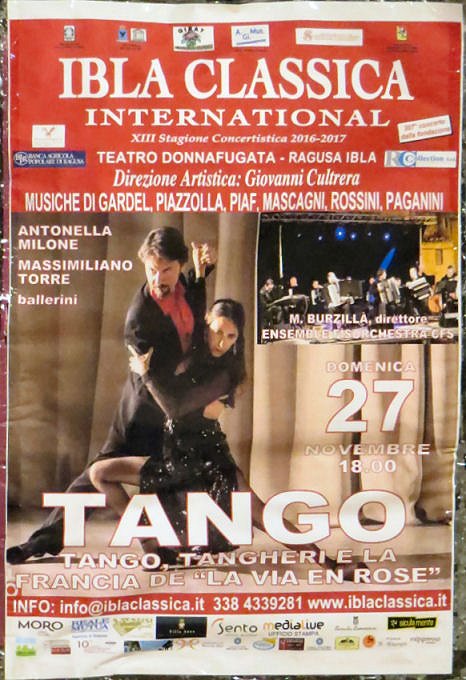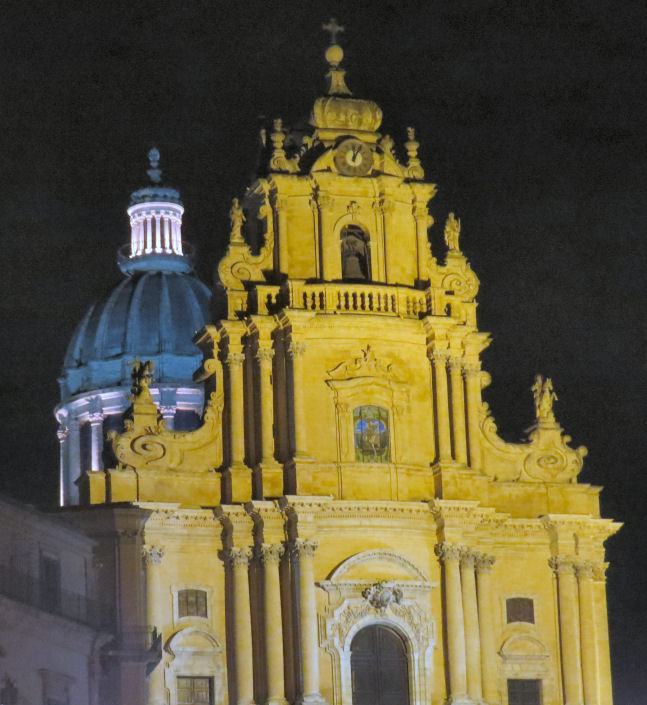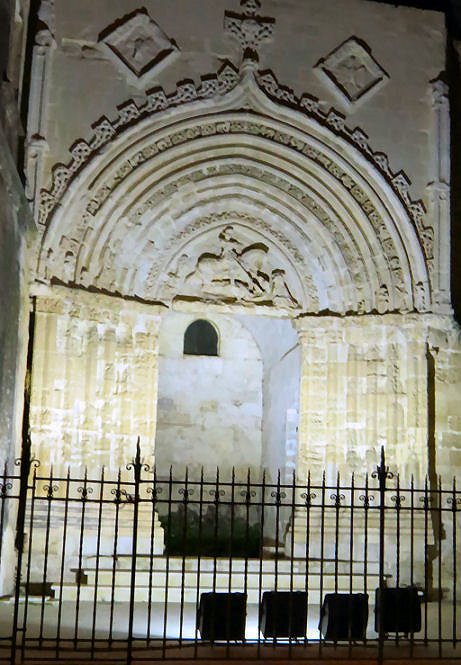I knew when I got into bed that I would not be able to sleep well, and I was right. I got up at 3:30 to check on the score of the Michigan-Ohio State game. I cranked up the computer and navigated to the college football page of ESPN.com. Oh, no! U-M lost by three in two overtimes. I saw the headline that said that Jim Harbaugh blamed the officials, but I refused to obsess over the details. By the way, it was still painful to write this a month and a half after the fact.
I tried to get back to sleep. I remember tossing and turning for hours, but I must have dozed off at least once. I felt edgy but not exhausted when I arose again at 6:30. Breakfast was at 7. I did not tell Sue about the results of the game; I am still not sure whether she noticed my ill humor.
Sue and I walked back over to the hotel's restaurant. The breakfast spread was impressive. I ate a wedge of frittata, a slice or two of ham, some melon pieces, two bowls of cereal, some orange juice, and a cappuccino. The cappuccino was the best that I had tasted in Sicily, although that was not saying much.
After breakfast I realized that I had neglected on the previous evening to take any photos of the temples when they were lit up at night. The hotel was situated to provide a very good view of them.
Our plan for that day began with a drive to an inland area of Sicily called Enna Province. In the town of Piazza Armerina we planned to visit Villa Romana del Casale, a large Roman house that was famous for its mosaics. Lunch was scheduled at a nearby restaurant. From there the bus would transport us to our base for the next two days in Ragusa.
Enna was almost as elevated as Erice, and that morning it was almost as difficult to reach. The map showed that it would be an easy drive up SS122, but what do you do when the road is washed out? Giuseppe had to take a detour on some side roads. At one point we could see where a mudslide had rendered the highway impassable.
We drove through the town of Caltalissetta before reaching Enna. From there it was a short drive of perhaps twenty miles to the town of Piazza Armerina and its main attraction, the Villa Romana del Casale.
Susanna had provided us only a little information about the villa. She reported that the digging had begun in the fifties.[1] The archaeologists discovered the remains of a country villa used by a Roman colonial governor and his family in the fourth century AD before Constantine's reign. At that time the empire was governed by four tetrarchs, none of whom lived in Rome. The one named Maximian, who was based in Milan, managed the affairs in the Italian peninsula, Sicily, and northern Africa.
The Romans had rigid social classes, and the owner of the villa was definitely part of the upper crust. Large numbers of slaves would have been required to keep it operational. However, only the manorial complex had as yet been unearthed. There must have been slave quarters near by as well, but they had not been located by archaeologists.
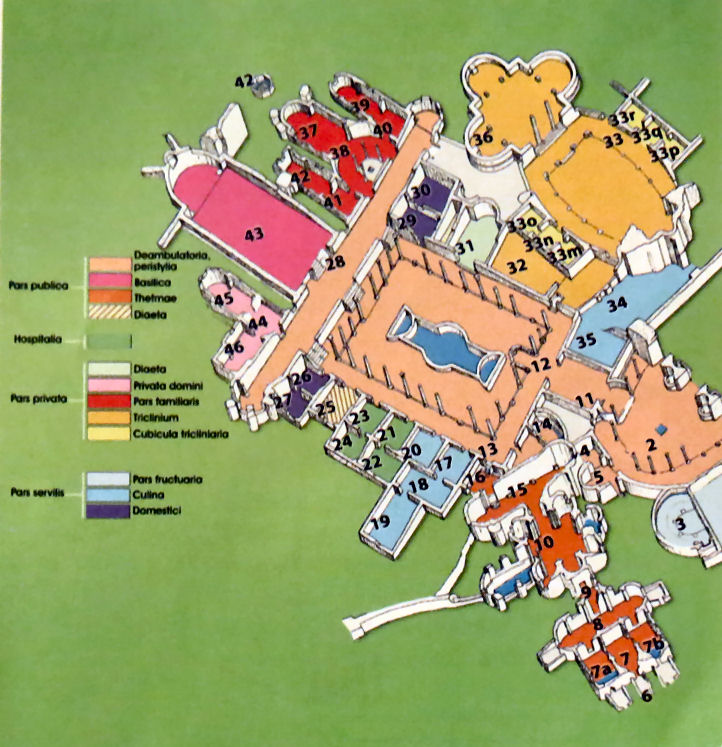
The villa included a rather large basilica, which was probably the place in which the governor conducted public business. Entrance into a basilica in those days was on the long side. When the Christian Church adopted the basilica style for its large churches, the entrance was moved to the short side.
The other large feature of the villa was the peristyle, the open-air courtyard that contained a large pool. The Romans of that era were big on bathing. Both hot- and cold-water pools were provided for both men and women in the villa. The thermal system was quite elaborate, and it must have been expensive and labor-intensive to operate.
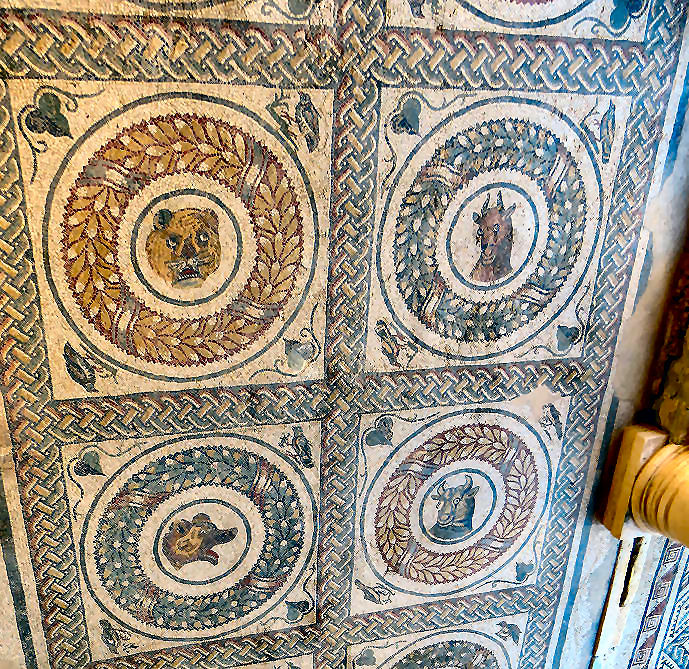
When Giuseppe drove our bus into the parking lot, Susanna was stunned to see that the lot was almost completely empty. She said that on her other tours it was full of buses and cars. Since the weather was also cooperating that day, she concluded that the conditions should be ideal.
Susanna revealed that she had read a small book that was available at the souvenir stores for a few euros. I was smart enough to purchase it, but not smart enough to get it before entering the villa.[2] She also told us that passarelle had recently been installed so that, in the locations where there were many mosaics it was possible to photograph them fairly well. A roof had also been constructed to protect them from the elements.
We did not have the benefit of a local guide for this attraction. The passageways there were probably too narrow to make guiding a group of our size feasible. Susanna's last piece of advice before turning us loose to explore the villa was to try to imagine what it would have been like to live in this villa in the fourth century.
Sue and I set out with that objective on the outside of the exhibit. The remains that were visible there seemed similar to others that we had seen, but we did not know precisely what we were looking at. It was difficult to visualize what life in the villa would have been like because most of the interesting areas were inside. Having the book, which was written by Giuseppe Di Giovanni, at hand while we were walking around would have been a great help. Not only did it describe each room in rather thorough detail; it also featured several maps of the villa that would have helped us create a better mental picture what it must have been like in imperial times.
I later discovered that UNESCO had posted on the Internet a short video of the villa. Watching this video made it clear to me how lucky we were to visit in late November. In the video the crowds milled by on the passarelle in dense one-way traffic with obstructed visibility. Our group might not have had the opportunity to take so many photos, and we might have been prevented from going back to something that we wanted to see again.
Once we were inside the covered area, I, for one, lost all sense of perspective of the complex as a whole. My attention was totally directed toward the floors below us where each set of mosaics seemed to be exceeded in quality by the next.
We began our little tour near the peristyle. We could barely see it across the way from the passageway. The floors that surrounded it were filled with squares that contained the images of the heads of wild and domestic animals. What we could view below us seemed quite remarkable to us. These were easily the most artistic, most colorful, most numerous (160 animals!), and best preserved ancient mosaics that I had ever seen. However, they would not have seemed remarkable to the inhabitants. This area was merely a sidewalk for getting from one part of the complex to another. The most remarkable mosaics were definitely elsewhere, and the action was out in the peristyle, which included a large swimming pool, not in the passageway.
One of the next rooms through which we walked depicted two scenes. The one on top showed six women who were, unbeknownst to me, dancing. I photographed the one who was the most striking. The other section was difficult to make out because it was in bad condition. I learned from the book that it apparently showed the rape of the Sabine women.
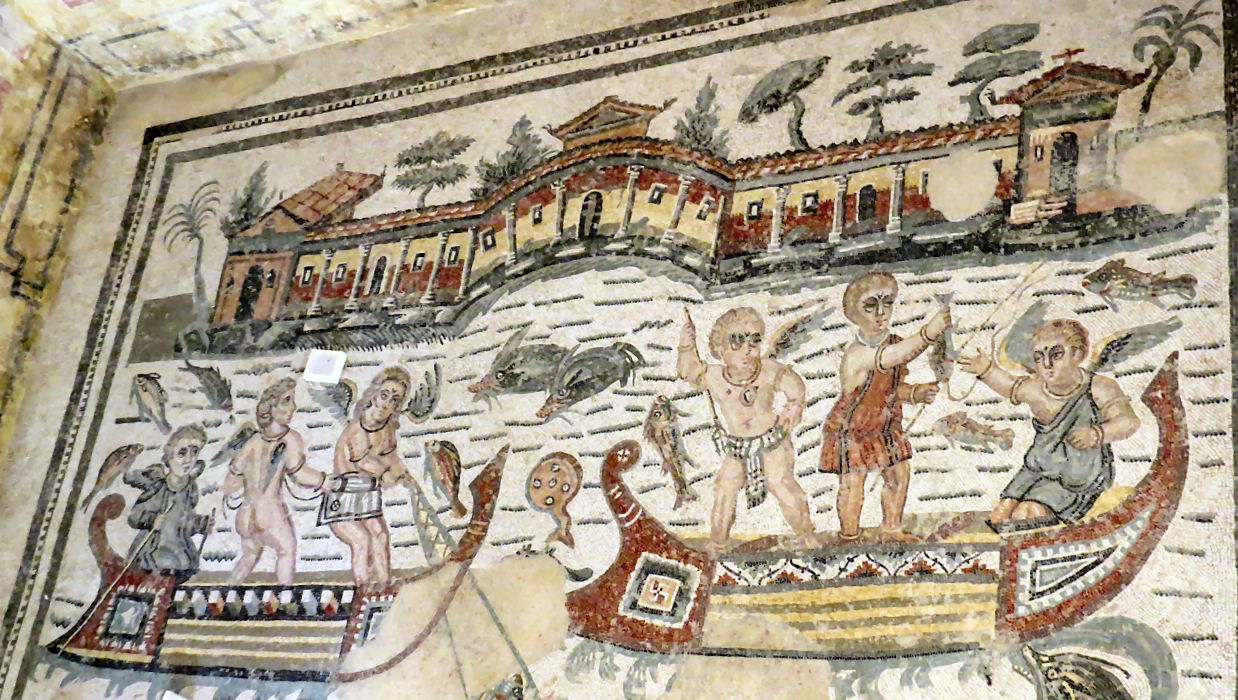
Sue and I decided to split up. She did not like to feel pressured to keep up with me, and I was always afraid that if I did not maintain a brisk pace, I might miss out on the most interesting items.
I was later able to distinguish a few of the rooms from descriptions in the book. The room of the circus[3] showed men in horse-drawn chariots urging on their steeds with whips.
The room of the Small Hunt showed some men with weapons and nets. They were engaged in diverse types of hunting. The game that they sought ranged from rabbits to wild pigs to deer. Nets, dogs, falcons, horses, and, of course, slaves helped the hunters.
The corridor of the Great Hunt was unbelievably huge. It measured forty-five meters by two and a half meters. It was not wide enough to stage a football game there, but it was long enough that a fteam could easily get four first downs without reaching the other end. It was also easily the most spectacular display, showing seven separate dramatic scenes of hunting, but not for food or sport. Rather, the objective was to bring back to the capitals of the empire exciting animals for the entertainment of the citizens.
These scenes were a real delight to view both in person that morning and the second time around when reviewing the photos while composing this journal. However, it appeared that the artist was probably more familiar with some of the animals than with others. For example, he depicted one man calmly walking an ostrich up the ramp to the ship while grasping it with one hand around its waist and the other on a wing. That approach would leave the ostrich with its three lethal weapons—two feet and the beak—free. I sincerely doubt that the fellow, whose unprotected head was inches from that beak, would have lasted five seconds after grasping the bird in that manner.
Another example involved the two pachyderms, the elephant and the rhinoceros. In both cases the animals seemed to be much less imposing than I remembered them from our safaris in Tanzania in 2015. The elephant was surely the shortest of its species in all of Africa, and it must have held the imperial record for the longest trunk ever.
On the other hand, the depictions of cheetahs, leopards, lions, and tigers showed the great cats as awesome predators that sometimes even got the better of the Roman stalwarts. I especially enjoyed the extremely timorous expression on the face of one poor fellow who was tasked with helping to guide onto the deck of a ship a tiger that was only secured by a couple of ropes.
What I liked best about these scenes were the expressions on some of the faces. The nonchalance of the man holding the ostrich defied credulity, but the visages of many of the hunters gave a pretty good insight into the difficulty of capturing wild game.The mosaics even included shadows. I had never previously noticed any shadows on mosaics. The sense of perspective was really pretty good.
I suppose that it was inevitable that a mosaic of a griffin was included in one of the scenes, but at least the hunters never succeeded at killing one or subdued one to the point where it could be carted up and brought back to Rome or Milan.
Installation of the passarelle was a great idea, and because we almost had the villa to ourselves, they allowed us to take unobstructed photos. The one drawback was the limitation on the angles available.[4] Most of the time the scenes of the great hunt were upside-down. Sometimes one had to take photos from a forty-five degree angle, which distorted the proportions a little. This was meant as an explanation, not a complaint.
One character in the Great Hunt was clearly meant to be depicted as a VIP. He appeared to be older, and he had a beard, a cap indicative of rank, a stick with a mushroom head, and a very richly decorated robe. He also was accompanied by guards who appeared ready to defend him from animal or human assailants. Some scholars speculated that this might be a depiction of Maximian himself, but the latest opinion of scholars was that he was a military commander on the eastern frontier of the empire.
The bikini room was the most famous. It showed ten girls; eight of them were in bikinis. Only the foot of one was visible. The one who was dressed was bringing a crown and laurel to the diminutive miss in the middle of the bottom row who evidently had been victorious in an athletic contest. Two girls were shown running a race; one was holding dumbbells, which for centuries were thought to help athletes jump farther; one held a disk; and one spun a golden wheel on the end of a stick.
At least two of the young ladies were clearly blondes. The book reported that the Roman women could dye their hair blonde using a concoction of leeches that were allowed to marinate for sixty days. It also said that Roman girls were considered marriageable at the age of twelve. If they were not married by the age of twenty, they were considered spinsters. Those in their late thirties were old women.
Ann Oglesby noticed that the corner of the room showed a completely different pattern of a mosaic. After we returned to the bus, she asked Susanna about this. Susanna was surprised, too. She texted a friend of hers who knew a lot about the villa. He said that the mosaics that we had seen there were often placed on top of previous mosaics, and there was probably another set under that. The book said that the villa that had been used by the Roman governor had been constructed on the site of buildings that had previously been abandoned.
One room showed some rather funny antics by children. They hitched up carts to geese, pigeons, and other large birds and held their own chariot races.
Another room depicted a number of aquatic scenes that made little sense to me. The book explained that they depicted the legend of Arion of Methymna, a real person who was a famous poet and musician in his day. Somehow a number of legends also grew around him involving his rescue by a dolphin when he had been kidnapped by pirates. Parts of that story were illustrated in this room along with numbers of mythological and real sea creatures.
There was at least one room that had a good number of naked people accompanied by “amorini,” little cupids.
At some point I ran out of rooms and corridors and went outside. I took a photo of a latrine and a lavatory there.
I then reentered the building through a different door that led to the vestibule of Polyphemus. The depiction of Ulysses' nemesis was a little weird. The artist seemed to know that the Cyclops had an eye in the middle of his forehead, but he also provided him two eyes in the usual location on either side of his nose. In The Odyssey Ulysses blinded him by driving a stake into his sole eye, but that would have done little good if the big guy had had two other visual organs. Also, the hero was shown as about half the size of the giant. Since several of Ulysses' men attached themselves to the bellies of each of the sheep, this must surely have exaggerated Ulysses' stature by a factor of at least five.
The last room that I explored was the huge basilica. Wendall was already there. I took advantage of his presence to take a photo that showed the immense size of the room.
The time for returning to the bus was approaching. I had not seen Sue for a while, and I was somewhat worried that she might have lost track of the time. However, she appeared at the last minute.
I took a few photos of the souvenir stands, a poster advertising a “Palio dei Normanni”, and Giuseppe. Then I went over to one of the souvenir stands to purchase the book that Susanna had recommended. I almost accidentally purchased a French version, but the proprietor made sure that I had the one that I wanted, which was in Italian.
When everyone had boarded the bus, Giuseppe drove up to an “azienda turistica out in the country named Torre di Renza. On the way I saw some magpies and two guys riding on donkeys, or at least they looked like donkeys to me. I tried to take their photo through the bus window over my shoulder, but it came out very fuzzy due to the motion of the bus.
At one point Giuseppe seemed to stop the bus and do something to raise it up to clear a bump. Did I imagine this?
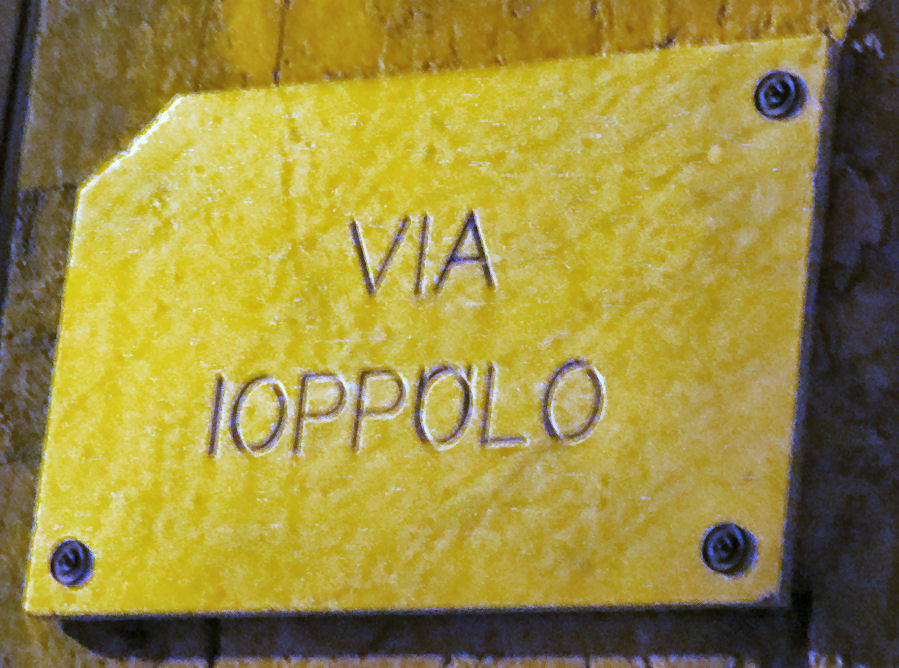
The road had several hairpin turns. Nevertheless, cars would pass us as we were negotiating them. Giuseppe definitely earned his free lunch that day. He sat at our table.
My recollection of the Torre di Renza is dim, and the only photo that I took of its exterior was the mosaic sign. Later I discovered on the Internet that it was a sixteenth century villa that eventually became the local bishop's summer residence. The current owners had converted it into a hotel with a lot of amenities and three restaurants. We were almost the only diners that afternoon in one of them.
The appetizer was prosciutto, salami, ricotta, fruit, and a stuffed pepper. The pasta consisted of tortellini with something in a pesto sauce. It also included grapes, which Sue told me that I really enjoyed, and small oranges.
Sue and I sat at the end table with Swee Mee, B.K., the Pissaros, Karen, Jon, and Giuseppe. I do not remember whether I liked the meal. If I had not liked it, I surely would have expressed my feelings in my notebook.
After lunch Giuseppe drove us down to Ragusa, which, we learned, was in some ways, two different cities. We would be staying in the old town, known as Ragusa Ibla. It had been nearly destroyed by an earthquake in 1693. The new town was built much higher on the hill. According to Susanna, the old town had only been developed for tourism in the last ten years or so.
The views of Ragusa on the drive in were quite stunning. Unfortunately I was on the wrong side of the bus to get a photo. It definitely reminded me of our approach to Matera, the bizarre and fascinating cliff-side town that we had visited on the South Italy tour in 2011.
The bus had to park well below the main level of Ragusa Ibla. The group had to walk up to the hotel from there. The journey started with a formidable staircase and then proceeded uphill past the Purgatory Church through some dark streets to Via Ioppolo. Fortunately, our luggage was transported to our rooms for us. Nevertheless, the trip wore Sue out, and she was suspicious of any further walking in this very steep city.
Our lodging in Ragusa was at a hotel diffuso, which meant that there was no central structure. The name of the establishment was Hotel dell'Orologio. The rooms were detached dwellings that were all in the same vicinity, but they were not necessarily contiguous. We were assigned room #210, which was the closest one to the reception area.
Sue did not attend when Susanna took us on a walking tour of Ragusa Ibla. Actually, for the most part we walked on just one street. It led past the Cathedral of St. George and the equally impressive Church of St. Joseph. Our stroll ended at the gate to the Giardino Ibleo, which we already knew would be closed. Along the way I noticed an ATM that was attached to a bank. I made a mental note to stop and get some cash on Monday.
Quite a few places appeared to be open for business, including Gelati DiVini, which sold both gelato and wine. I was not that hungry, and I knew that Sue had squirreled away food from the last few meals. I stopped at a tabacchi that also sold snacks. I purchased there a bag of cheese doodles, which served as my supper with enough left over to munch on the next day. I also noticed a place called Shaker Bar. It seemed incredible that there would be anyone from the Shaker community here, and in fact my Italian dictionary said that Italians sometimes call a mixed drink a “shaker.”
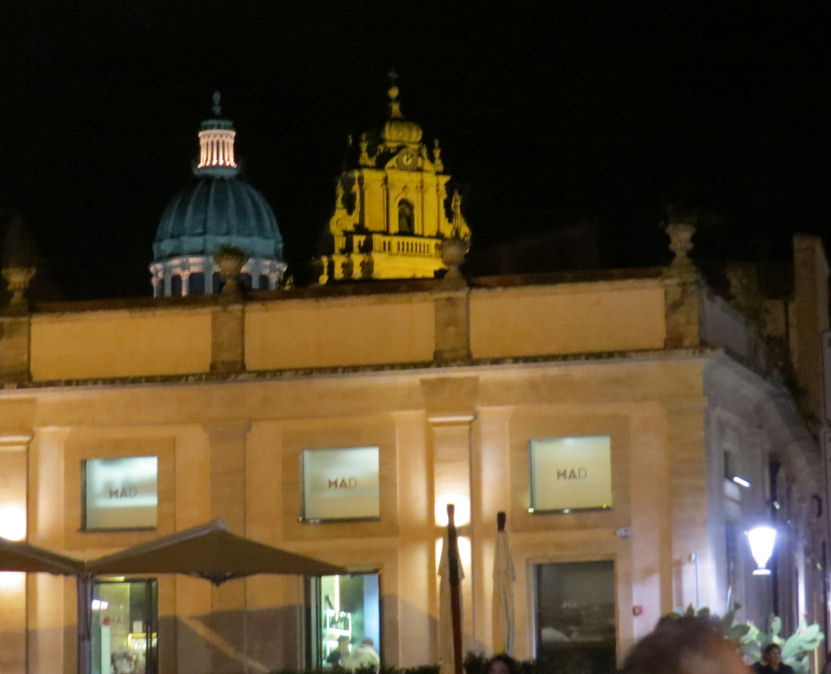
On the way back to the room I ran into Giuseppe walking in the opposite direction. He asked me where Susanna was. I told him, in Italian, that she was near the garden. That was stupid; his English was much better than my Italian.
I noticed that the street signs of some of the smaller roads used the word “chiaso.” This must be a Sicilian word for an alley or something similar. It was not in my dictionary, and Google Translate accused me of misspelling chiasso.
Our room was also reminiscent of our temporary residence in Matera. The wall in the bathroom was clearly made of very rough stone. The stone arch in the living area continued into the bathroom. There was no closet. A niche by the door had been rigged up with a pole for hangers.
The villa had been a very pleasant distraction, but I was still in a dark mood at the end of the day. I had pretty much kept to myself the entire time.
After I had washed out some clothes I was feeling a little feverish, and I was definitely quite congested. I took my customary evening shower and still felt punk. Sue had brought a few Alka Seltzer Cold Plus “pop pop fizz fizz” envelopes with her. She let me have one. As usual, its contents knocked me out.
[1] That is what I wrote in my notes, but it is not precisely true. Excavations were undertaken as early as the nineteenth century. Professional excavations were done in the twenties and thirties. The digs in the fifties, however, were the most significant.
[2] I am not even sure if any of the souvenir stores were open yet.
[3] The word in this context just means round or ovoid. A Roman circus was the site of chariot races.
[4] I had brought my monopod on the trip, but I never used it. If I had brought it on the bus that day, and if I had figured out how to get the display to work when the camera was in photography mode, I could haveover come this problem.

